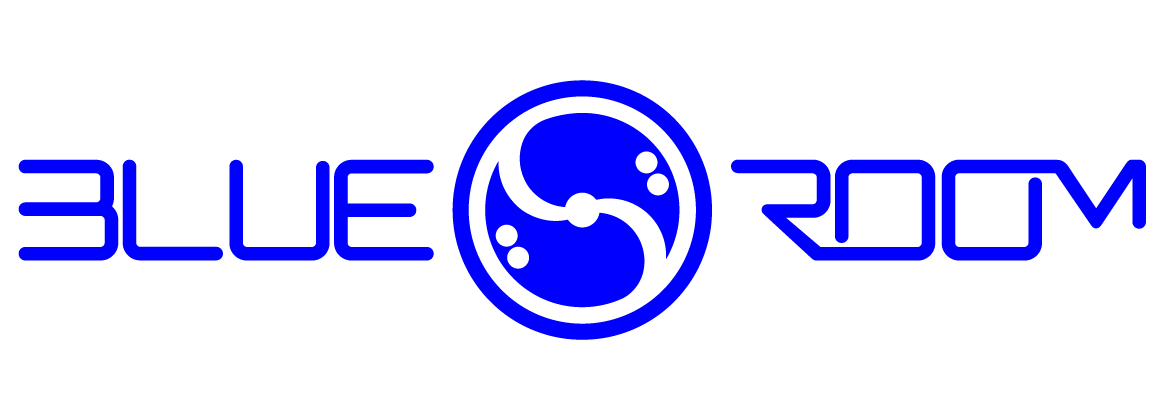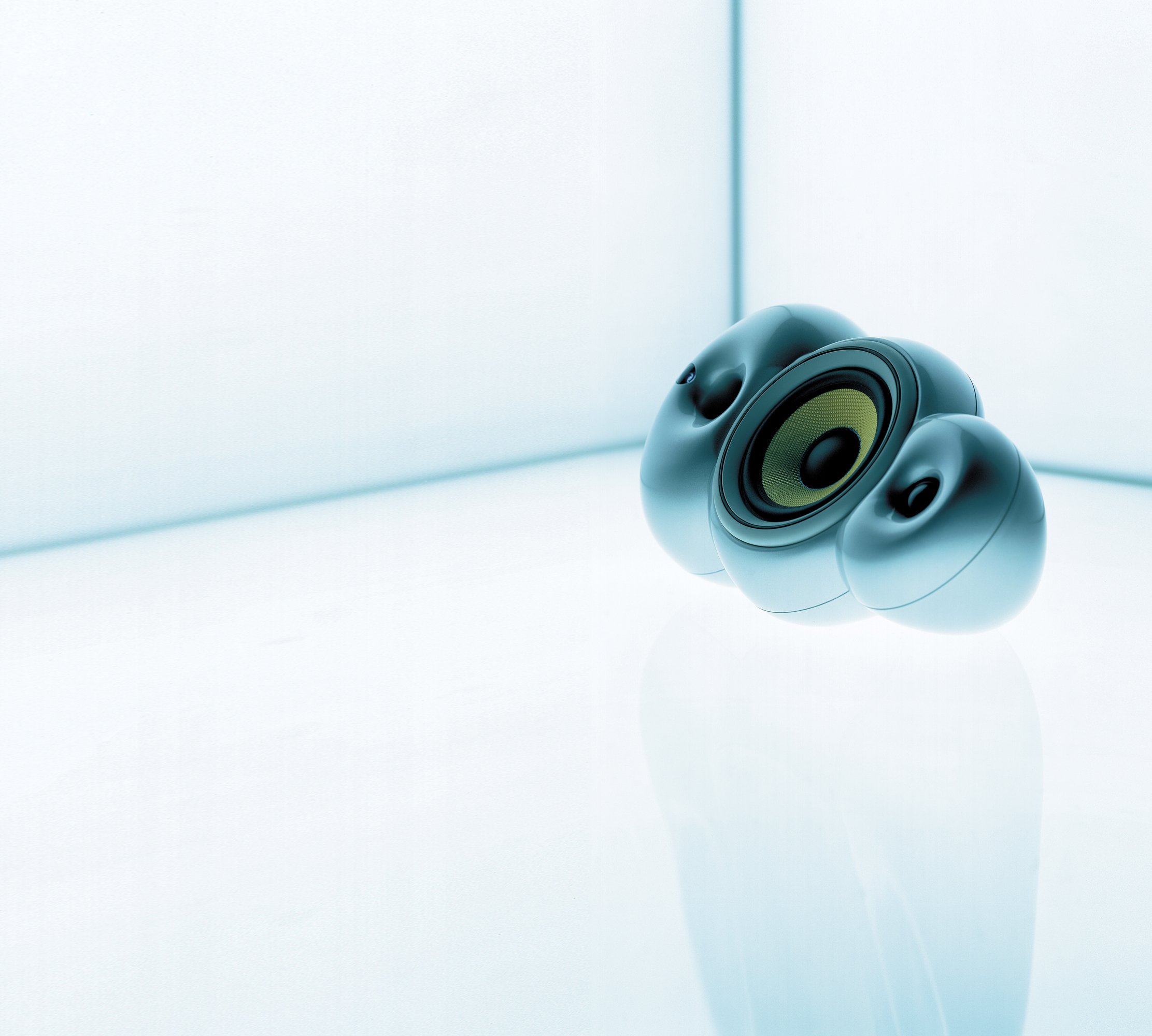
blue room loudspeakers

"The shape of sound inspires me. Just search cymatics to see why. I first began to visualize sound as being alive. I desired to create forms that embody this concept. For me, the speaker is not only playing a technical function. It was more like an instrument capable of playing all musical instruments. Like a window granting access to the outside world, speakers are a voice for our musical choices."
SIMON GHAHARY
The mission of Blue Room Loudspeakers was to redefine conventional speaker aesthetics.
It began with sculptural, rounded forms with anatomical contours. Objects to inspire a connection to music. A relationship designed to deliver superior sound quality over conventional rectangular enclosures. It was fitting that the first designs coincided with a new wave of electronically based music. Here were objects that expressed a new way of listening – with your eyes as well as your ears.

The Pod Loudspeaker range became an antidote to the convention of square, box-type enclosures and a new range of speakers for a generation of people as passionate about style as they were about music.

"As a shape, it was also organic, undulating and evolved fit for purpose. This concept triggered many ideas and has continually inspired me throughout my career. My forms have grown to display a lineage of visual personality traits that make them distinct as a family… These unique pieces aim to create an attachment to their user and encourage their use to become objects to cherish and love. The nature of their shape also aims to create space around them and inspire that space when they were not in use."
SIMON GHAHARY
My name is Simon Ghahary. 1991 was the year that I found a source of free speaker components: the Bowers & Wilkins Loudspeakers Ltd. (B&W) research and development skip in Steyning, West Sussex.
I followed the music of the '80s emerging UK dance scene, designed flyers, carried record boxes, scouted and cleared warehouse venues for underground house parties and promoted my events. I was always intrigued by the counterculture of the 60s & 70s led by the beat generation and the hippies and punks that followed. There was a similar spirited movement happening. Having loved sound and played music, I was always fascinated by the power of sound to transform space and bring listeners together. It inspired me on how music also created the culture around it. At this time, I began experimenting with the construction of Sound Systems. The concept of the sound system fused all my interests, art, music, design and lifestyle into one.
I began imagining how sound waves behaved and developed an intuitive foundation point. I began to imagine the sound like a liquid and the ripple as the movement of sound. It made the cabinet shape important to the sound waves. Round cabinets made sense because of the lack of flat surfaces and sharp edges. I didn't fully understand the importance of this or the true dynamics; however, it didn't matter at this point as I had the trigger to start my concepts of curved speaker enclosures.
Some local friends introduced me to the rubbish skip, a metal container full of used and unwanted speaker parts outside the B&W research facility, Steyning. B&W was well known for their very expensive top-end hi-fi loudspeakers. My friends collected pieces, too, only to wait patiently to assemble completed versions of existing B&W loudspeakers from components they had collected from the skip over many months, sometimes years. Parts and cabinets were thrown out daily, in some cases, tested and then discarded—some components with minor faults, discontinued or cabinets with scratched paintwork rejected. I didn't have the patience to wait. I started to build and put together mutant versions to make my speakers. I did testing by ear most of the time. It was pretty primitive, but it worked, and I started to get results. I made speakers to play the music I liked, mainly electronic music and dub. A favorite was the Orb, bass-heavy, atmospheric and dynamic. Through this unconventional learning experience, I started to build my knowledge. Here, I discovered my limits and drew the speakers I wanted to make; this is where things became more organic and round.

IN THE BEGINNING ...
In my time visiting the skip, I was lucky to meet Dr. John Dibb, who once showed me around the B&W facility and answered some questions on acoustics, but it was through a twist of fate I met B&W maverick acoustic engineer Laurence "Dic" Dickie. Dic was working, unbeknownst to me, on a pioneering loudspeaker project called the Nautilus under B&W's then-owner and audio visionary Robert Trunz. Robert incidentally, through the Nautilus project, was following the legacy of the late John Bowers, founder and the "B" in the original B&W partnership.
I showed Dic my loudspeaker concepts and designs for the first curved Pod enclosures and discussed the materials I proposed to make them from - GRP (Glass Reinforced Plastic). The material was a point of interest for Dic, who was considering his options for the Nautilus's construction. This meeting was the beginning of Dic becoming my first mentor and a very dear friend. He arranged a meeting with Robert Trunz at B&W Research and Development Centre.
We spent a whole afternoon together in the listening room of Steyning B&W. It was a magical day. We got on well. We shared music and discussed my audio ambitions with the Pods. I listened to the history of the legacy Robert had created and his aspirations with the Nautilus and B&W. Robert then offered a proposition.
If I could produce prototypes of my Pod design, then Dickie would help with the acoustic engineering. Most importantly, Robert Trunz would throw the weight of B&W behind the project, investing in production and distribution.
In his own words, as Dic recollects... "It was one fine sunny day at SRE (B&W Steyning Research Establishment) when I heard the front doorbell go, not something which happened all that often. To my surprise and slight consternation, it was an officer of the law, but there was no going back; the door was glazed and he'd seen me already so I could only slide the door open and hope for the best! "I've had reason to search the premises of Steyning Video Hire and have reason to believe I might have found a quantity of property stolen from these premises," he announced. "The occupant," he continued," claims the material all came from the skip and was free for the taking. I don't believe him for one moment, so I'd be very grateful if someone could accompany me to the shop and verify his story".
“Well, now I was getting interested because we did use to throw away all sorts of good stuff, which pained me, and it was interesting to think someone was doing useful things with it, so I set off behind him and walked the 200m to the shop,” remembers Dic.
We were met by a young dark-haired chap who did seem a bit nervous but not unduly so. The policeman guided me to a back room where he proudly waved his hand at a pile of very familiar-looking objects. "There," he said proudly, "you can't tell me that's all rubbish; there's good stuff there." But as I looked more closely, I recognized bits and bobs that I fashioned with my own hands and, regretfully, had to consign to waste under pressure from the boss.
"Oh, Wow! You picked that up" I said, pointing to a cabinet experiment I remembered from way back. "Oh, and this! Well, that was an experiment in driver design, but there was only one, so you have a job making a stereo pair". Very soon, the two of us were deep in conversation while the officer looked on in mounting disbelief until eventually he had to interject. "So can I take it that all of this is, in fact, junk and none of it stolen?" "Absolutely!" I replied. "And it's great to see someone has put it all to good use!" and at this the policeman turned and strode out of the shop, disgruntled at the loss of a possible arrest.
“So the general chat about turning junk into gold carried on for a while until we reached a natural break in the conversation. Suddenly Simon turned to me and said ‘actually, there's something I'd like your opinion on’ and disappeared for a few seconds before reappearing with a portfolio. ‘These are some ideas I've been working on,’ he said, unfolding the cover to reveal some immediately intriguing graphics drawn in a heavy 6B pencil. The shapes before me had essences of Buddha, were totally curvaceous and just an amazing design for a speaker - because that was exactly what they were.”
“We talked around the subject for a while but, with very little modification, I agreed that these shapes would totally work. "So," asked Simon, "If I make a couple of cabs to this design will you fit the drivers and sort out the crossover?". I happily agreed, but in my mind, I doubted anything would happen and had almost forgotten our meeting when three months later, who should turn up at the R&D lab but Simon, bearing the completed fiberglass shells. A bit speechless, I accepted the cabinets and agreed that I had to keep my half of the deal and would have to sort out the drivers and crossover."

FROM 2D TO 3D
Leading up to this, through another twist of fate, I met Dave Roberts in a video shop. Dave was a craftsman in the GRP production process. I was considering the materials, showed Dave my designs, and asked about fiberglass production. Dave generously helped me through the production process. Dave became my business partner from that moment and worked with me on the initial Pod pattern design under my creative direction, and together with his expertise; we began developing the pattern, mold making and our first cabinet production.
I invested everything I had to make the first Pod shells. I sold my comic collection, books, and everything I didn't need to wear. Unfortunately, it didn't fetch a lot, but it was enough to get the materials to make the first pairs of the Pod. We both worked extremely hard to produce them. It wasn't until some incredibly kind friends donated funds to make it possible to open a small workshop that things started to move. We took residence in a back street on a Worthing industrial estate surrounded by automobile garages.
One of my friends Nick Johns, who helped us sand patterns and cabinets, made an introduction to his dad Tim Johns. Tim had built his business success on manufacturing in the Far East. Tim helped by investing in us and gave expert advice and coaching on what we would need to set up a company. It was a mighty wake-up call on what we needed to do to make the running of the business side successful. At the time, we were very naive and needed more business savvy. Another friend James Torme also helped with contributing funds.
The first shells of the Pod design emerged.


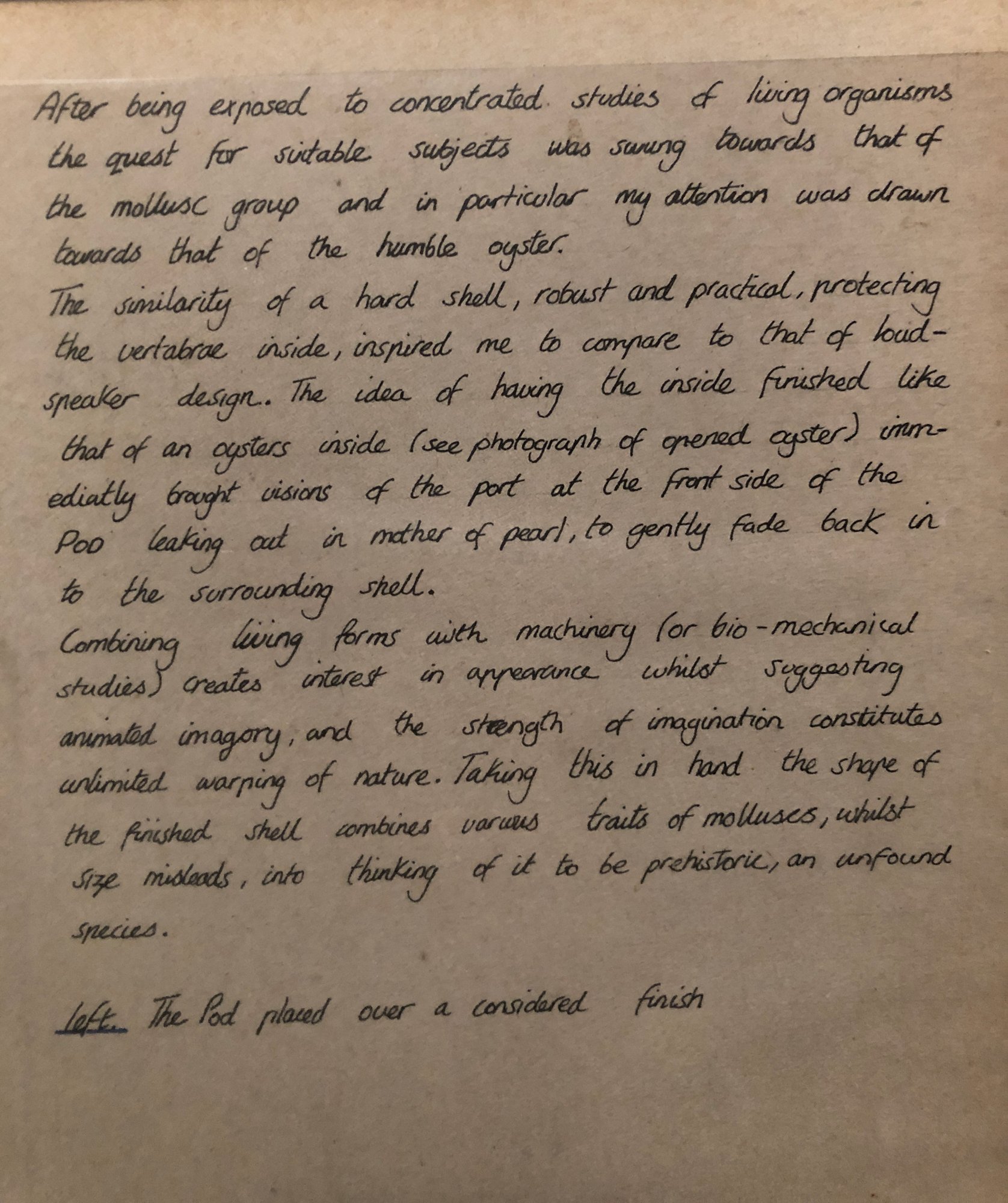
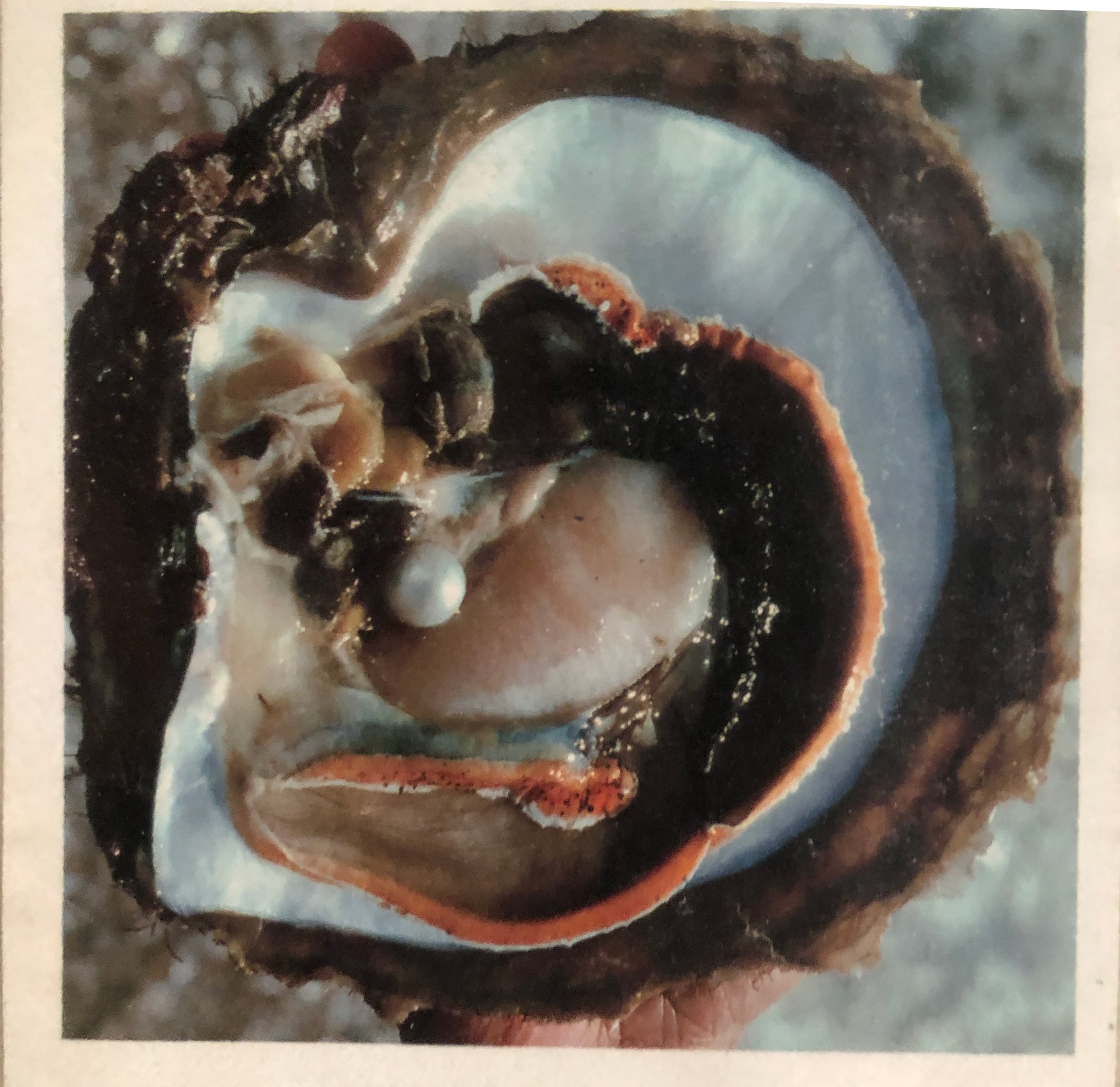



BIRTH OF BLUE ROOM
During this long production time, I developed what was to become the initial brand identity. It was to be the style and blueprint of the new brand, with a registered company identity: Blue Room. The name had many different connotations, from being a mythical US storage bunker in the fabled Wright Patterson Airbase that allegedly contained the remains of alien landings to ambient music innovators, the Orb's stand-out 39-minute track and hugely influential album from 1992. Both influences were pivotal to the naming. The latter was a huge musical inspiration. Alex Paterson, maverick 'sound smith' from the Orb, supported my designs. I later remember being so proud to add a quote to the HousePod brochure from LX. We became good friends to this day, and we later installed a Pod Sound System in the Orb's studio.
I had a massive appetite for Sci-Fi, and some of my first work came in the guise of comics that made it into small independent publications. It came from an imagination raised early on the West Coast psychedelic images of the 60s/70s fed on a devotion to British Sci-Fi comic 2000 AD.
I was first inspired to create the Blue Room logo from a drawing I made of a character with a double bass clef face.
The double bass clefs were a visual metaphor for increased sound. I also wanted to create a personal seal or signature hence the distortion into a 'S' shape.
My early collages (as seen below) using handmade cut & paste photography depicted the Pod as otherworldly, an ancient traveling alien artifact that was dormant until discovered. This visually linked to the myths of the Blue Room and would later influence the visual development of Blue Room Released.
The trademark of Blue Room Loudspeakers was created by hand. The films below were part of our first round of T-Shirts. Our link to the world of sound systems is seen with the emphasis on the word 'loud' before speakers.



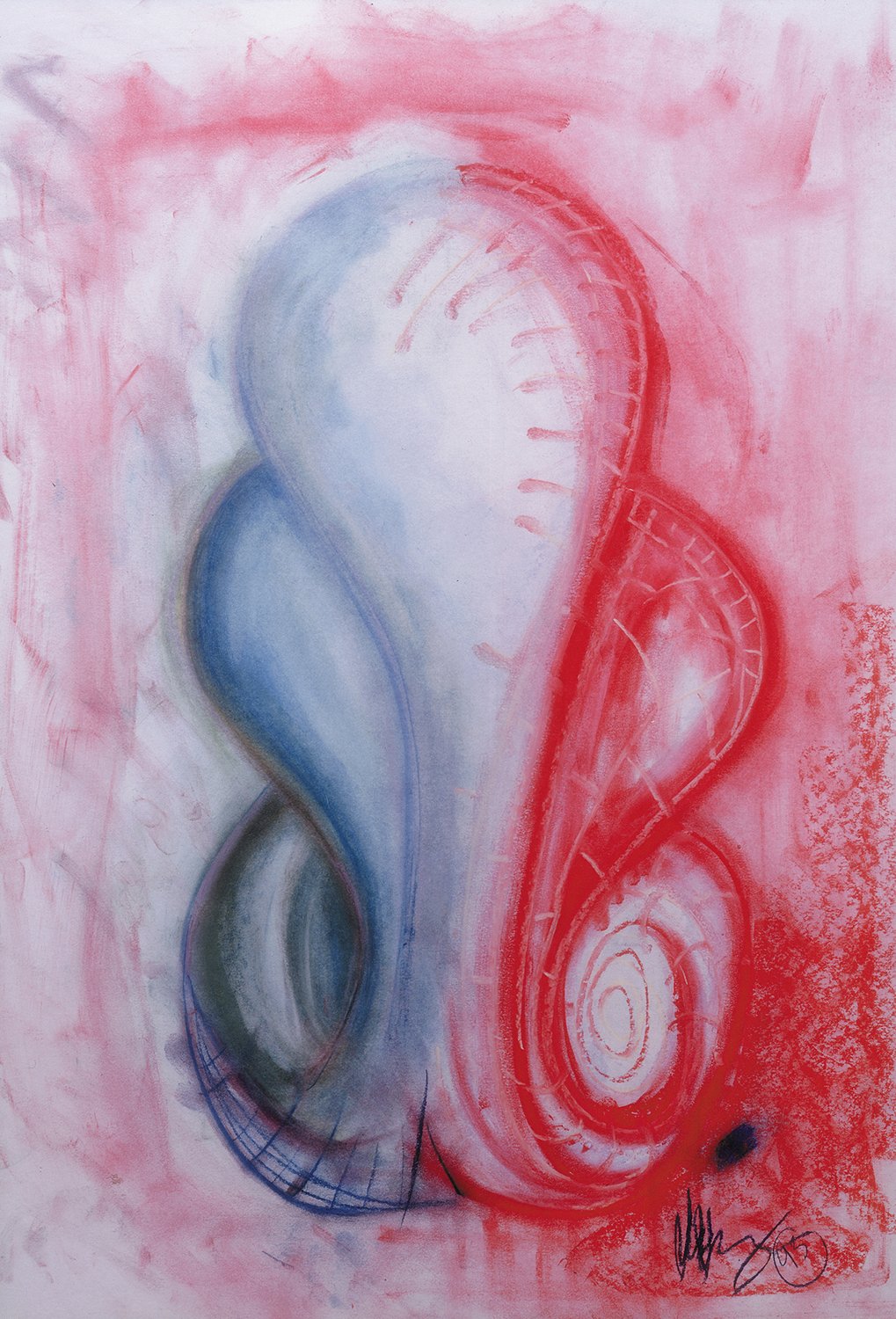


THE GREAT ESCAPE
A move back to Brighton and another twist of fate presented the opportunity to meet John Holland, owner of the Great Escape nightclub directly opposite the famous Brighton landmark, the Palace Pier. I brought the first HousePods to the meeting and convinced him to install a Pod sound system during their upcoming club refit, believing the Pod system was the way forward to ignite his dream of establishing the venue on the UK club scene. It was going to be a colossal hi-fi system of audacious audio quality, inspired by a clutch of world-famous legendary New York venues that hosted incredible sound systems during the first underground disco years, such as David Mancuso's the loft, Larry Levan's Paradise Garage and also Peter Gatien's "The King of New York Clubs" Limelight, Tunnel and Palladium. All were fitted with exceptional sound systems, and I was entranced by the folklore surrounding how the systems were positioned and split into frequencies. The stories behind them were fascinating and inspiring. It was our opportunity to make our mark and channel the passion of perfection behind the intent of the Blue Room.
It was immediately apparent that the club size demanded a more powerful version of the Pod. With speaker components provided by B&W (unbeknown to me at the time, breaking B&W production protocol authorized under the wistful eye of Robert Trunz), my design solution was to evolve the original form of the first Pod to accept a second loudspeaker driver beneath the first and sculpt the bottom from the spine. It suited the new application of the Pods, as they would be high up on brackets and more exposed. Based on the exact dimensions, new loudspeaker drivers would need to adapt to pull off the heavy demands of a club environment and deliver more power. Dickie wanted to split the frequencies with the Pods handling mid and top range and designed an extraordinarily large sub, road tested up until now, as the tube-based Blue Room Sound System. It called for an almighty bottom end to control the subfrequencies, which would mean building a wall of bass.



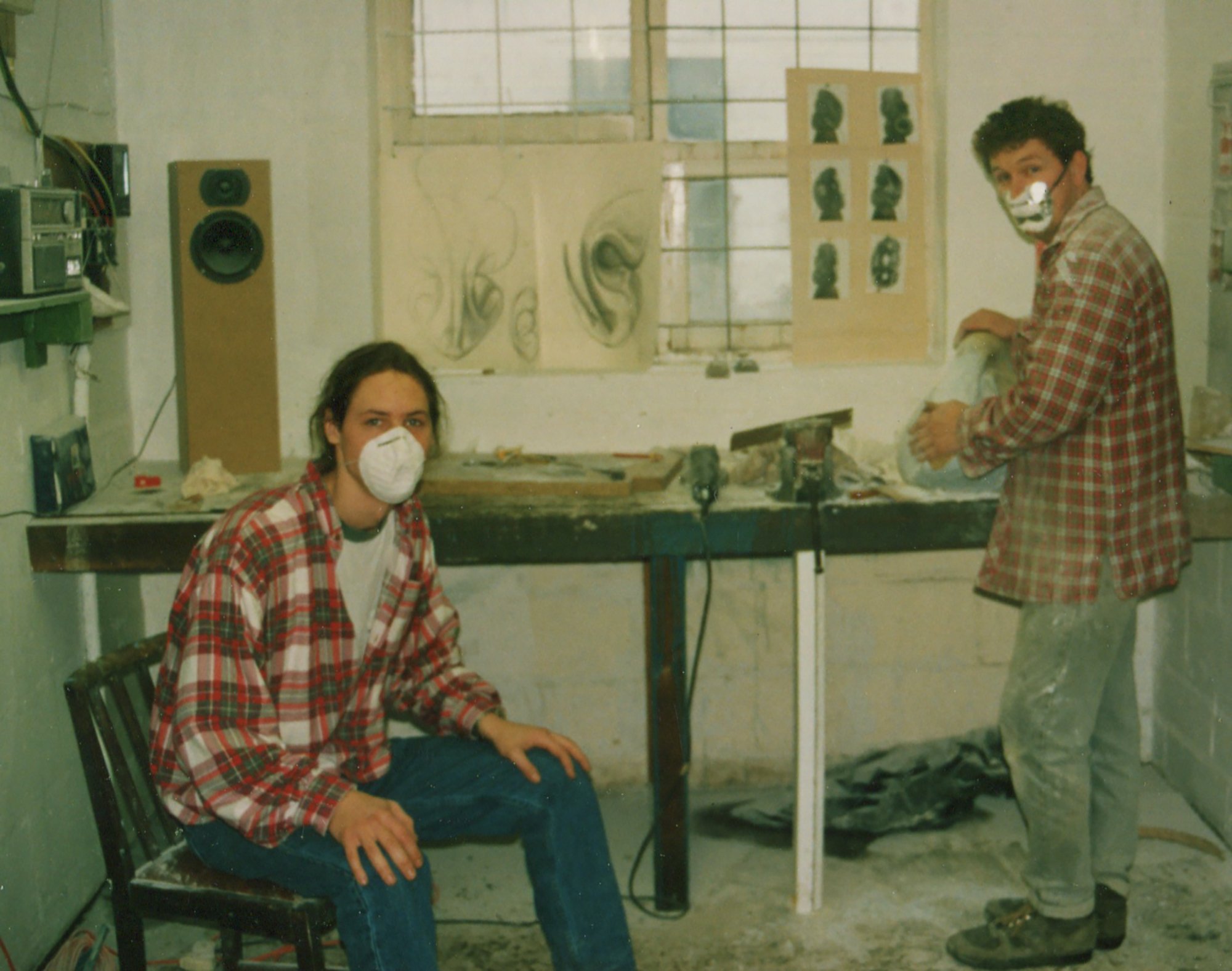


We excavated into the chalk cliff face to create the enormous bass cabinet. It was challenging work, my arms vibrated for days after. We positioned 24 x 801 bass drivers in that cabinet. Anyone that knows about hi-fi knows about B&W's legendary 801 series. They are used in the famous London Abbey Road Studios. 801's were being used to master orchestra scores. There are two bass drivers in a pair. Here we had 24. You can imagine the bass sound; it was sensational.
We assembled a small team of skilled engineers and fabricators, including a future employee called Mark Weaver. Dickie brought in a talented engineer named Martin De Saulles. Martin previously worked on flight simulators and knew from working with acoustics for professional environments. We labored around the clock to produce the Pods for the club's aggressive nine-day launch deadline. This team was to be the nucleus for our future Pod production at B&W.
The re-opening of Brighton's Escape Club in 1993 was a complete success, and the sound system was baptized by one of the founders of house music, producer and DJ legend, Todd Terry. The Pod system received critical acclaim, with the UK-based fashion and contemporary culture magazine The Face labeling it a "fierce sound".
By the time I had arranged a second meeting with Robert Trunz, we were able to not only show him the prototype Pods (aptly named House-pods because of their domestic use and in homage to the emergence of house music) we also had an identity, Blue Room Loudspeakers and a brand that represented our ambition. We also had a team. The pinnacle was presenting a complete club sound system based around the second Pod design, now called the TechnoPod, acoustically engineered with new fellow collaborator and Blue Room member Martin de Saulles.
The re-opening of Brighton's Escape Club in 1993 was a complete success, and the sound system was baptized by one of the founders of house music, producer and DJ legend, Todd Terry. The Pod system received critical acclaim, with the UK-based fashion and contemporary culture magazine The Face labeling it a "fierce sound".
By the time I had arranged a second meeting with Robert Trunz, we were able to not only show him the prototype Pods (aptly named House-pods because of their domestic use and in homage to the emergence of house music) we also had an identity, Blue Room Loudspeakers and a brand that represented our ambition. We also had a team. The pinnacle was presenting a complete club sound system based around the second Pod design, now called the TechnoPod, acoustically engineered with new fellow collaborator and Blue Room member Martin de Saulles.
BLUE ROOM NESTS WITHIN B&W LOUDSPEAKERS
Contracts were drawn, and we were integrated as a subsidiary under B&W Loudspeakers, 50/50. However, we were given the investment because the company would become fluid and profitable 12 months after the signing date. We naively signed the contracts without a lawyer. Critical mistake number one.
Although we were inexperienced, we did feel trusting and incredibly lucky to have Robert and the power of B&W Loudspeakers behind us. The full-fledged ferocity of Trunz backing the Blue Room steamrolled a path through all corporate protocol, which unfortunately alienated some of the B&W internal staff.
When this was testing, we believed we would be successful and were going at it like bulls in a china shop. In hindsight, to sit on the board of B&W representing Blue Room and not understand how to get the best from corporate management, I can see why some people were frightened off by the change and chaos we represented. I, for one, will be eternally grateful for the fact they got behind us.
Our launch party was staged at the Event in Brighton. We arrived at the live sounds of techno band Fluke, and the thumping London underground club sound at a venue synonymous with the early Acid House raves in Brighton. It was an intentional merge with our roots, Pods were part of the electronic music culture, and this relationship was essential to me and the Blue Room.
The visual representation of the Blue Room was far removed from the B&W of that day. Images were staged to reinforce the 'art of sound' and part of the marketing concept around the HousePod. The Pod was intentionally shot from behind to create mystery and ambiguity, a spirited departure from any technically led marketing B&W produced at the time. It directly resulted from my fighting to involve the London-based Design & PR company Think. Together we made the HousePods much more of a lifestyle item. This photograph evolved after many experiments over a two-day shoot in East London with the Art direction of Andrew Sutton, head creative from Think and photographer Robert Clifford.
Here we coined our trademark slogan "the future shape of sound".

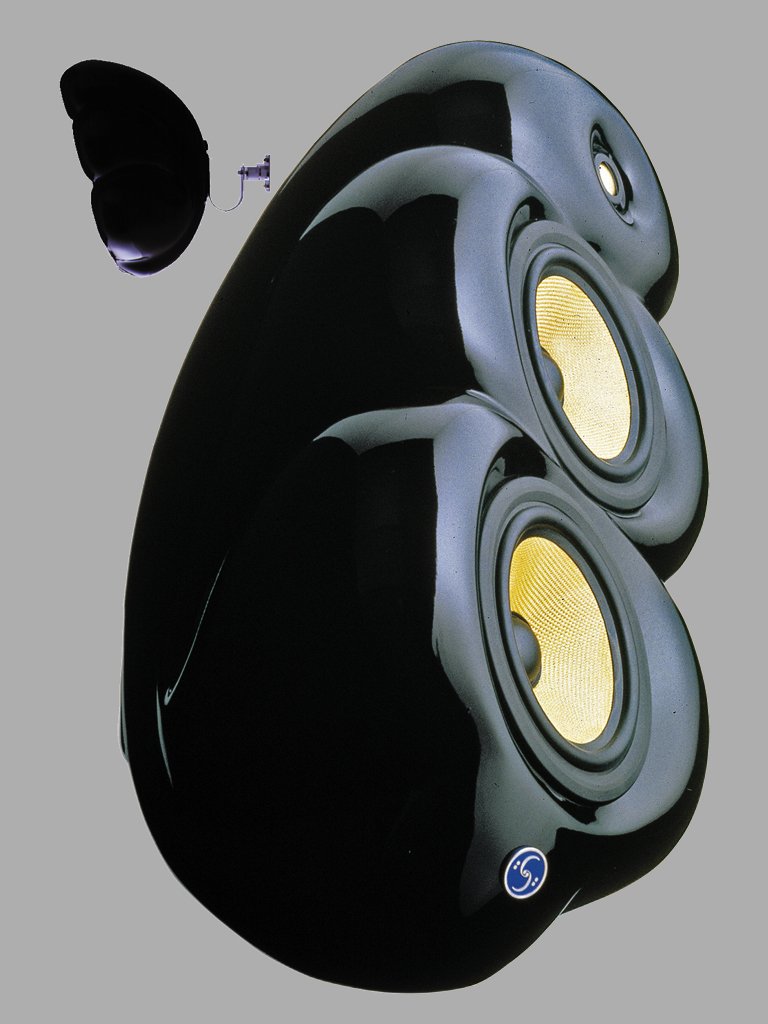

Think gifted us a lucky break with UK band 'The Grid" (Richard Norris and Dave Ball) with multiple white Pods filmed for a music video "Swamp Thing". I'll never forget receiving a call from Think requesting we assemble as many white Pods as possible in a truck. David Roberts and I split a shipment destined for export and raced with everything we had to London. We placed the Pods throughout the studio, and filming began. It was shot in a day, and we traveled back to Brighton late in the evening. "Swamp Thing" by The Grid was a monster of a tune released in June 1994. It reached number three in the UK charts and was in the top ten for eight weeks. The Pods also appeared on both of the Grids album covers. The video played everywhere and the exposure was priceless.
1994 BLUE ROOM UNLEASHES
The HousePod won the European Image and Sound Association (EISA) award 1995-96 for audio design, which I accepted on behalf of Blue Room in Berlin. It was a magnificent start with B&W Loudspeakers and secured cult status for changing the face of the domestic hi-fi market. The Pods had become an antidote to the convention of square, box-type enclosures. I'm proud to say they spearheaded a revolution in audio design, the effects of which can still be seen today.
As part of a promotional launch in Holland the enclosures were also treated as a canvas and hand painted by the wonderfully eccentric, talented, Amsterdam-based underground artist Daniel Dadara.
This was later followed by a collaborative project to produce one of Dadara's designs for a gallery opening. The Dadara baby has since become a serious collector's item. Our original roster of colors was black, white and blue. We started to experiment. Through a team-up with Erisbian Garbs of Brighton, a duo of eccentric and highly talented designers of fashionable leather products, a project was born to create a unique pair of HousePods. These were intended as a gift for Madonna. Unfortunately, this pair of speakers went missing during a film shoot in Denmark and never made it to the Queen of Pop.
Our decision to create an in-house GRP workshop for cabinet production took far too long to set up, and by the time we were up and running it was too late to recover the funds for our first significant exports of the HousePod. It was critical error number two and another major lesson in business.
The business partnership dissolved, and we became employees of B&W with reduced product shares and royalties. I was the emotional owner, so the Blue Room was acknowledged and understood as my baby. I loved what I did, and in my eyes, there was still a lot to do. I carried on with the Creative Direction and Loudspeaker design. Dave Roberts stayed to run the GRP cabinet production, including product pattern and development.
We began to employ even more talented staff and fabricators, such as Nigel Tew. Our team began to grow.
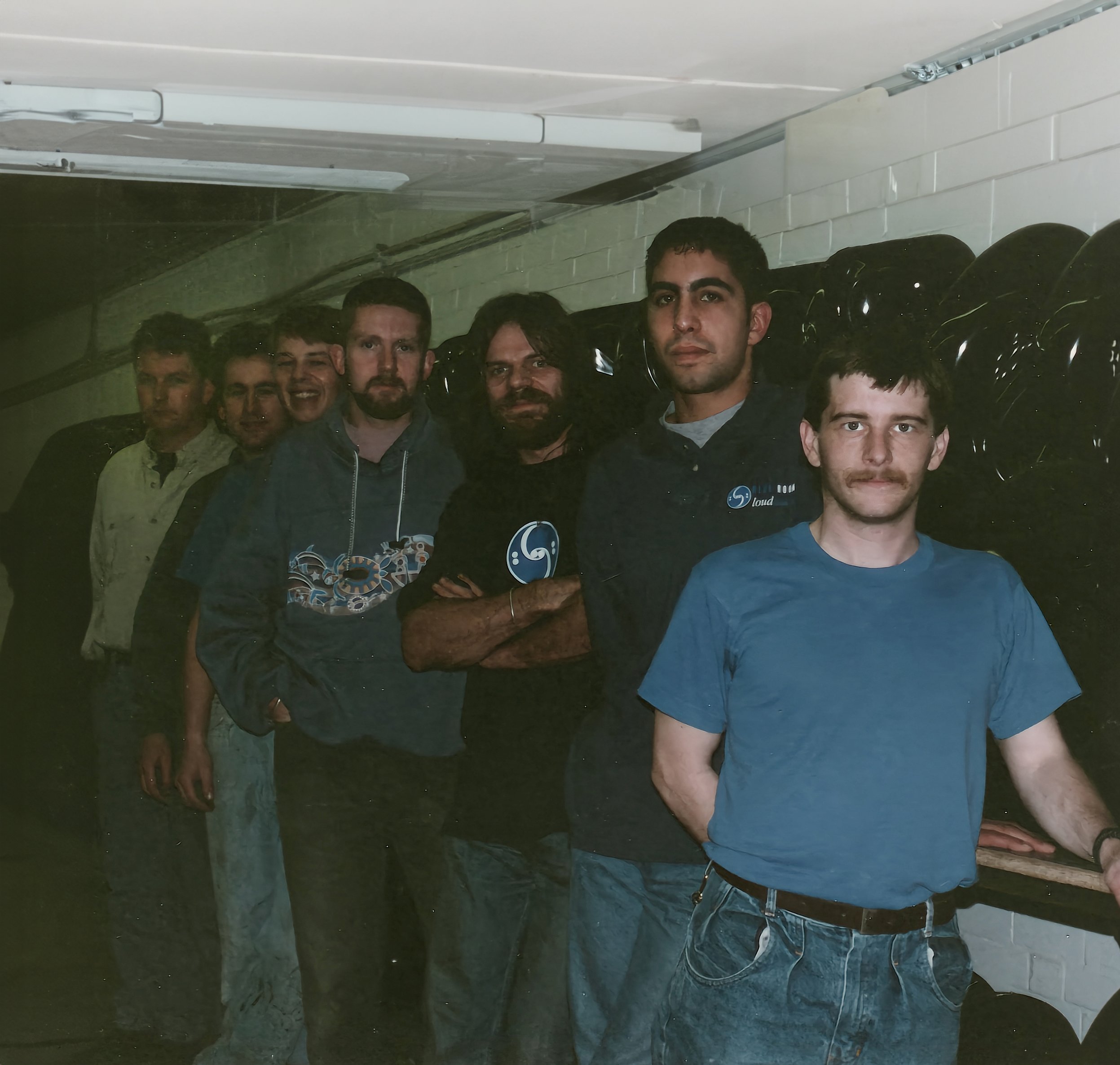




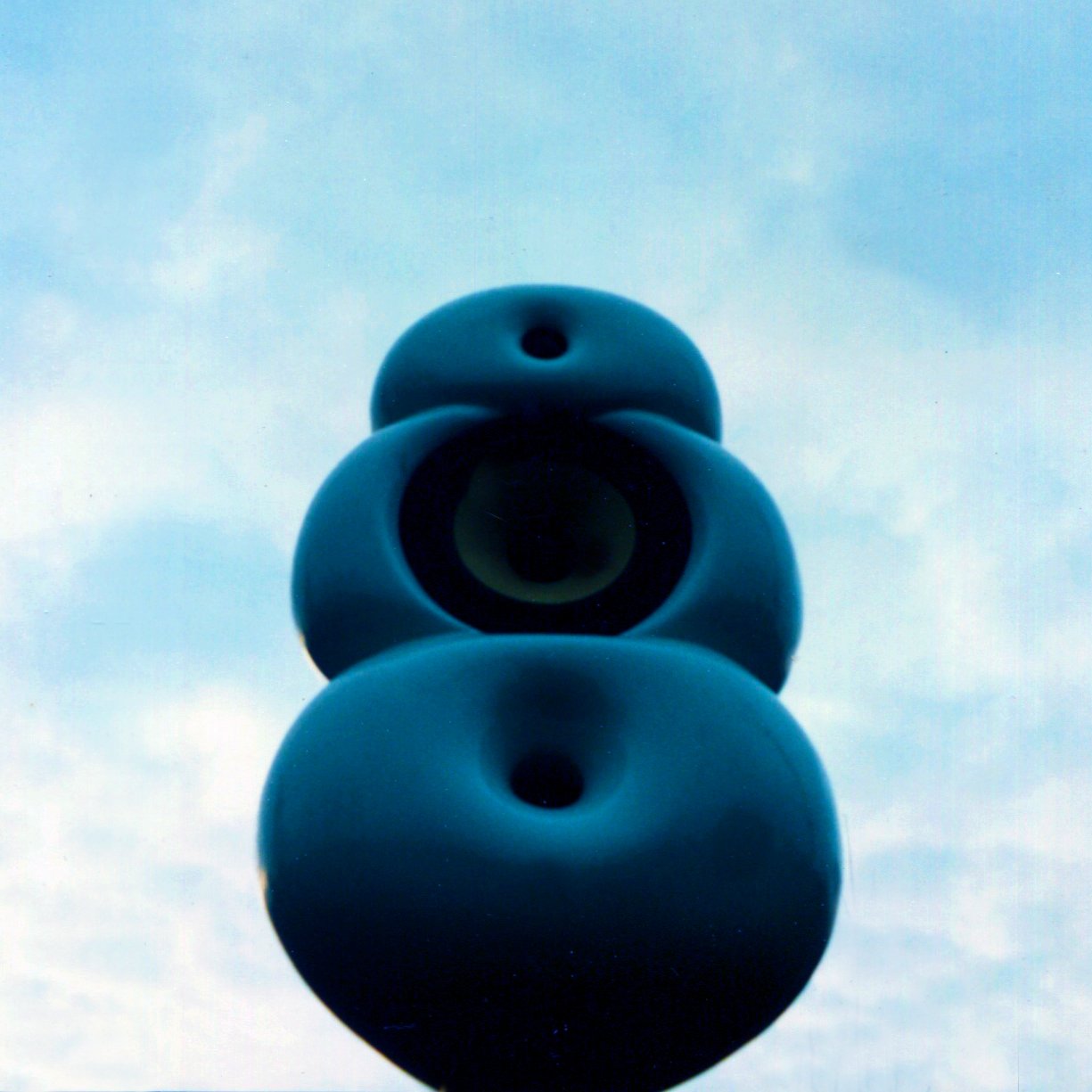

BIRTH OF THE FIRST MINIPOD
With the popularity of the HousePod it is evident to us that a smaller-scale version would widen its appeal to a larger audience. My first concept, then called Pod Junior, was conceived in 1994 (the illustration below and before), and carried the refined characteristics of the HousePod and incorporated acoustic improvements learned in collaboration with Laurence Dickie, Martin de Saulles, Robert Trunz and B&W loudspeakers Ltd. (B&W). The most visible acoustic enhancements can be seen on the shape surrounding the high-end unit and the overall reduction in volume in scale to the main driver, as the original HousePod cabinet volume was oversized.
The MiniPod was born.
Martin de Saulles made improvements, which included the refined tweeter aperture horn, and Dave Roberts crafted the pattern.
The first MiniPod cabinets produced in 1995 were molded in-house from our workshop facility at B&W Loudspeakers by our team from GRP material. The expense and time involved would not allow the potential of mass production, so the original MiniPod began life as a relatively exclusive product; only four thousand units were made.
BLUE ROOM HALTS PRODUCTION
Blue Room Loudspeakers separated from B&W in 1996 and was to become independent in 1997 as part of a deal by Robert Trunz to split away from B&W and take Blue Room with him.
One of the negative consequences of the separation from B&W was the number of loudspeaker projects that ground to a halt, subject to the conditions of Robert Trunz's private equity sale to B&W and Blue Rooms' two-year freeze to produce products.
We did revisit the production of the HousePods & TechnoPods for a short time. However, the new production facilities in Denmark and the use of plastic closed the door to developments in GRP, leaving some projects in limbo.
The menage of products caught in a flux, include a Bass extension subwoofer for the TechnoPod and an early idea for a Zeppelin loudspeaker.
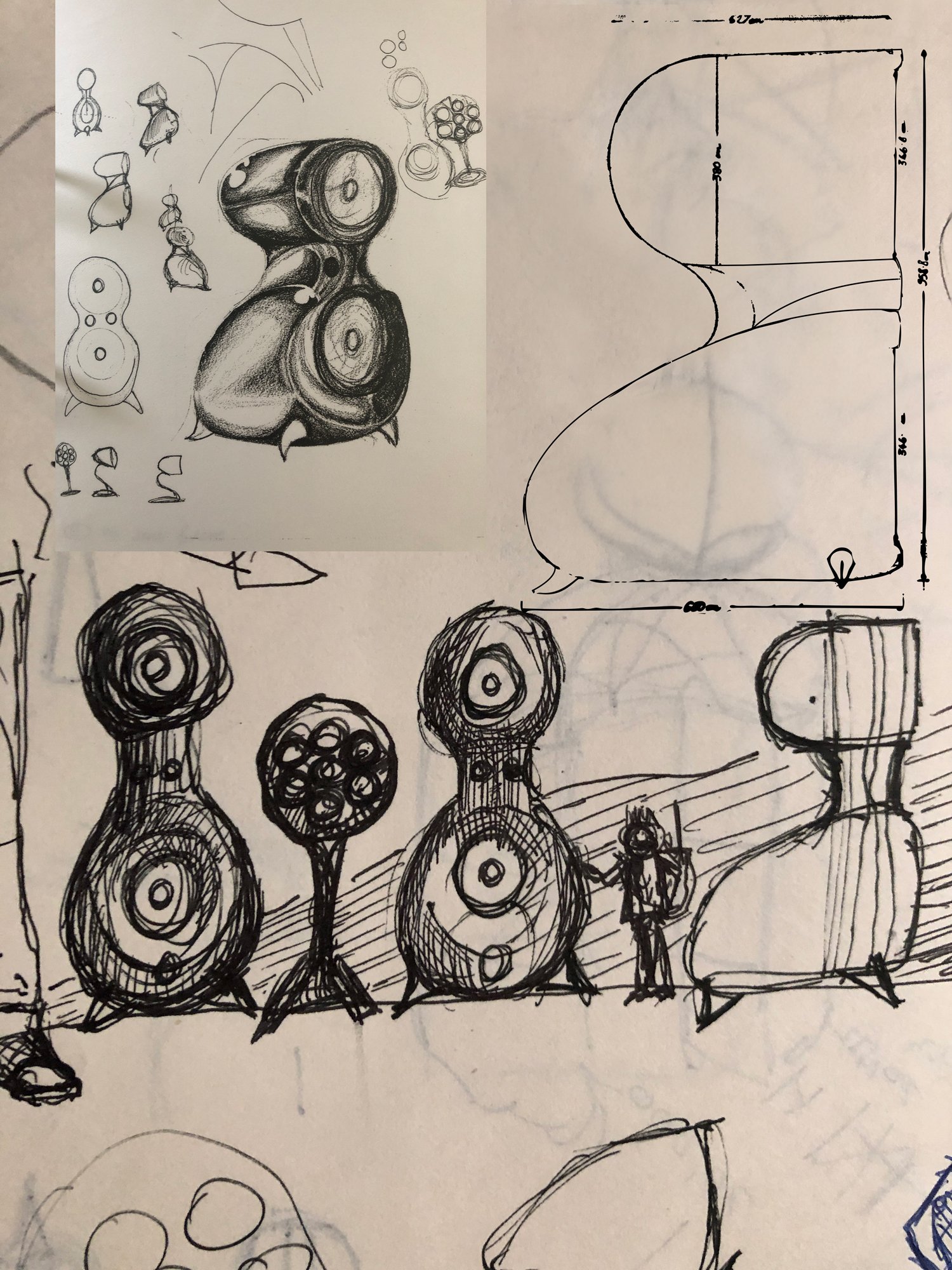

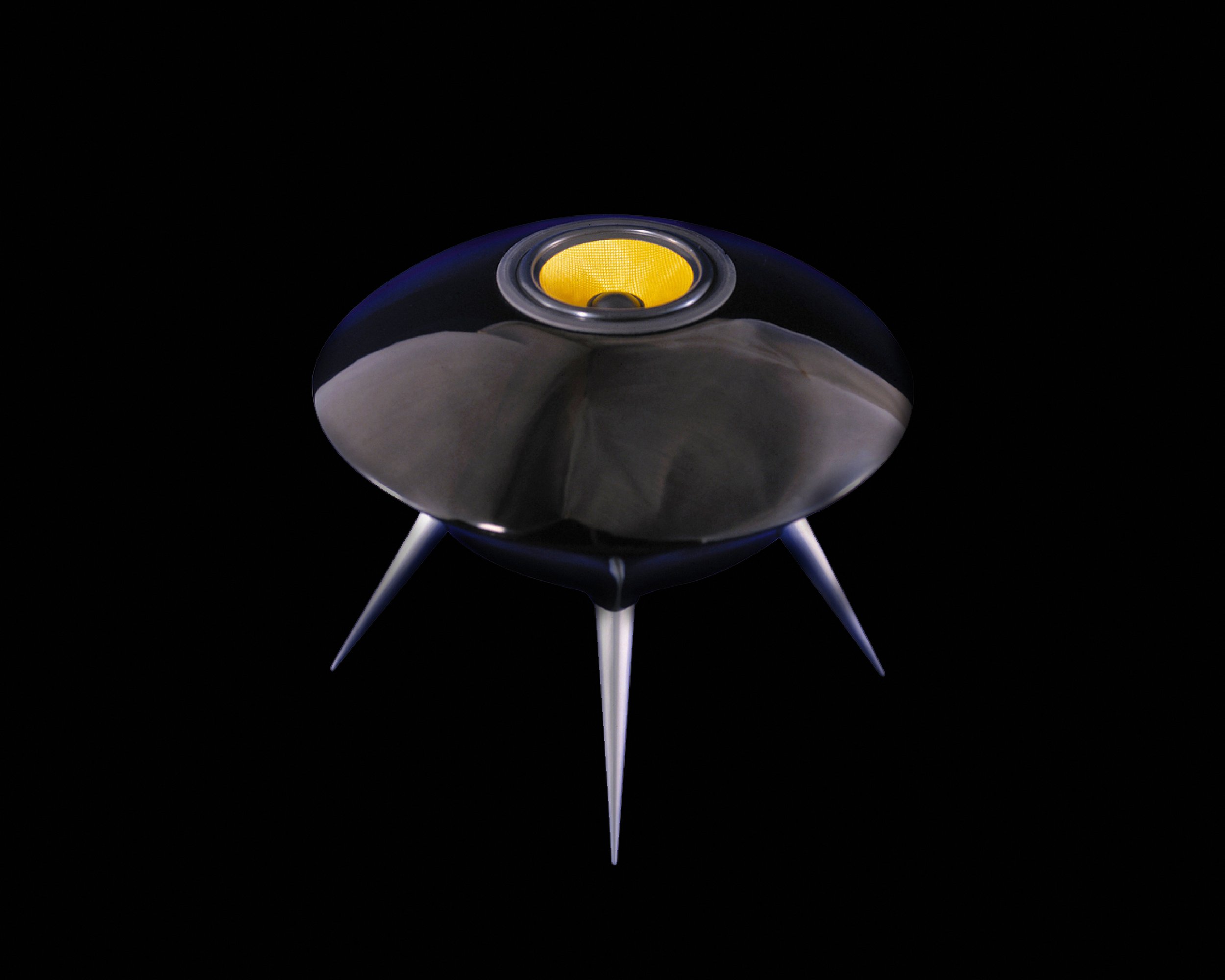


THE LAUNCH OF BLUE ROOM RELEASED
The two-year embargo for Blue Room Loudspeakers did not dampen the spirit of Blue Room, but certainly changed the working dynamic. The space was an opportunity to build the Blue Room ethos, moving it toward its intended audience. We did this via the genesis of the new record label Blue Room Released. Conceived in 1994, I began reaching out to artists I met while pursuing underground dance culture. Many of them had great unreleased music. My simple synopsis of the label was to build a futuristic soundtrack for the Blue Room. Robert Trunz backed the venture, and it ran more independently outside of the music company Robert was forming called MELT 2000. As the labels ran closer, Robert had access to our music producers and artists for collaborations from his MELT2000 international roster of World music musicians.
I felt highly passionate about the music, the artists and our audience. It was an intense, evolving sound and a great time to link people together, culture building and forming a community, increasing our audience and tribal following as the music grew and spread in popularity. Electronic music is human sound adapting to indulge technology; for some, it feels like the signature sound of energy. New and abstract sounds over hypnotic rhythms can conjure vast soundscapes for escape, pleasure and transcendence. A piece of music not only writes 1000 words like a picture. It can also paint 1000 pictures.
Blue Room now had its distinct soundtrack and a kick drum for a heartbeat.
DJ Mike Maquire compiled our first release. Mike's choices for the tracks had all influenced me at the time. In my opinion, they rekindled the energy and urgency of Acid House, mixing hypnotic tribal percussion with sweeping electronica, creating the fullness and dynamics of a movie soundtrack, telling a story in composition. At the underground events, the playing medium was Digital Audio Tapes (DAT) tapes. It helped maintain a critical depth of sound that delivered quality above and beyond conventional recording media at the time.
This deepness and richness in sound quality complemented our legendary B&W driver cardboard tube sound system, designed and championed by Laurence Dickie to deliver full hi-fi bandwidth sound at our early live events with its wall of 801 drivers. The fact most of the music was unreleased and only being heard at these events created a cult following that added mysticism around the sacredness of the music.
From a visual and storytelling point of view, the record label imprint successfully expanded the mystique around the Blue Room identity. It allowed mediums such as the website, merchandise and the many record covers to visually manifest and explore a window into the psyche of the Blue Room. Although related, its fluid and free-form visual narrative oscillated from how we presented the MiniPod.
To maintain the Blue Room image and reputation, I was dedicated to the standard of music. I wanted it to inspire people and do justice to the artists it represented. I was hugely respectful of them and their passion, so I carefully compiled track lists for compilations. Being A&R for the label also allowed me to build some wonderful friendships with our artists worldwide. Countries included England, France, Germany, Holland, Israel, Finland, Sweden and America. It was a fantastic time to unite these people and encourage collaboration. Artists virtually unknown in their own country were starting to meet their counterparts from other nations. It was a fantastic thing to witness. Their cultures and language may have differed, but they all shared the same passion for their music. Music unified them. Bonded them together and, in turn, solidified the standing of the whole label. Blue Room Released didn't feel like a business or company; it felt like family.



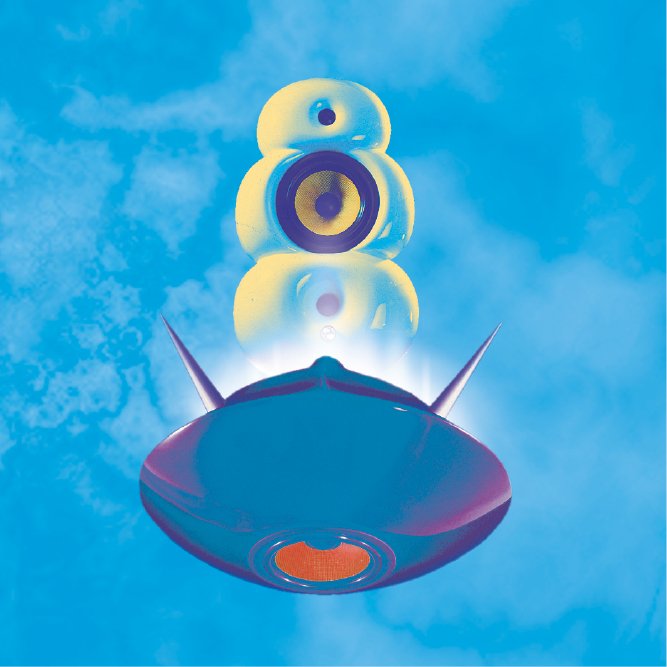



Our label manager Mick Paterson arrived with an already illustrious career in the music industry and had previously run Nova Mute, a subsidiary of the hugely successful independent music label Mute Records. Mick steered the release schedule bringing his experience and methodical temperament to help mitigate my enthusiasm with pragmatism. Dave Tyler, running exports and Celeste O'Neil as the head of PR aided by Louise Leekham Donno, later joined us. In 1996 we opened our headquarters in Rivington Street, London near Shoreditch, which at a time was emerging as a culturally creative hot spot. The dedicated team at Robert's International Music label in Worthing ran our business admin. First called B&W music, and then after the split with B&W, called MELT 2000. MELT stands for Music, Energy and Loud Truth. MELT 2000 was Robert's voyage into tribal Jazz and the roots of music.
Organized events and music allowed people to access the Blue Room environment. The events became little worlds assembled, richly decorated and sonically transformed by the passion and dedication of teams of people that loved music. These people included James Baggort and the crew of Ahimsa Group Productions and initially myself, together with Laurence Dickie's legendary Blue Room Tube sound system. As this system grew and my time got spent more on the label, it became the legendary UK Innerfield Soundsystem. Daveid Phillips, a force within music organizing the likes of, amongst many others, Nirvana's festival debut in the UK, also helped with our promotion in England, lining up two epic nights at the Forum, a famous London location where Jimi Hendrix played).
The chance to have a tent (called Amazon) within the legendary Tribal Gathering 1997 where a solid Blue Room lineup, including the Juno Reactor, Saafi Brothers, Koxbox and X-Dream, shared the lineup with the cream of Electronic music, including Kraftwerk, Orbital, Andrew Weatherall, and Daft Punk. London and Merchandising of the label were also hugely popular with T-shirts, stickers, and posters, all acting as cultural ambassadors for Blue Room globally on the underground electronic music scene.
The Blue Room logo became a symbol associated with exceptional audio quality. We worked with the best people in the music business to maintain an excellent reputation for consistency and sound. Our releases mastered by Kevin Metcalfe an industry legend who worked with the likes of The Prodigy, Paul McCartney, The Clash, The Police, Yello, Duran Duran, Queen, Depeche Mode, Happy Mondays, U2, Simple Minds, David Bowie, KLF, Orbital, Spiritualized, The White Stripes and many more. Our releases played louder and crystal clear on any sound system.
The Blue Room even landed as a permanent fixture in Helsinki, Finland, under a collective of custodians entitled Freaks with Good Manners, run by DJ Borzin and Nique, who opened a Blue Room bar delivering revolving eclectic music for like-minded experience seekers.

WE COME IN PEACE BLUE ROOM RELEASED - BLUE ROOM GOES GLOBAL
These were incredibly creative times, with many people becoming part of the Blue Room to grow its capability to deliver unique experiences through music, photography, artwork and events. The diversity of musician identities enabled some great collaborations and commissions with visual artists such as psychedelic painter Brahma, who created the image used for the cover of Saafi Brothers and The Infinity Project's Mystical Experiences.
Renowned sleeve designers such as Andrew Sutton worked on the original house bag design, while Richie Burridge (long time visual collaborator with Plaid) worked on the original Trip Through Sound, Etnica, Sun Kings, Saafi Brothers, Koxbox and Alien. In fact the first collaborations were late nights with Richie working together on albums like Total Eclipse's Violent Relaxation, with Richie patiently working hard to incorporate my ideas and images with his own. I'm grateful for the patience of all the people I worked with in the early days.
I was pretty particular and protective of the Blue Room and always spent time adjusting people's senses to its wavelength. It was where I cultivated my digital art designing record covers, adverts, posters, merchandise and other visual imagery.
Signs of life was my first actual experiment in broadening the style of the sound of the Blue Room. It was a chance to return to the roots that first inspired me, the sounds of LX Paterson and the Orb. From a foundation of techno music, we experimented with dub, electro, ambience and breakbeat. By the time of the final release in 2001, we widened the music styles further with Freekstyle an album that introduced new artist Acidrockers and his trademark drum & bass sound. We had released over 100 records when Blue Room Released had started to reach its zenith, uniting this wide range of styles and touching upon some local UK chart success with Juno Reactor only to disappear silently without a trace.
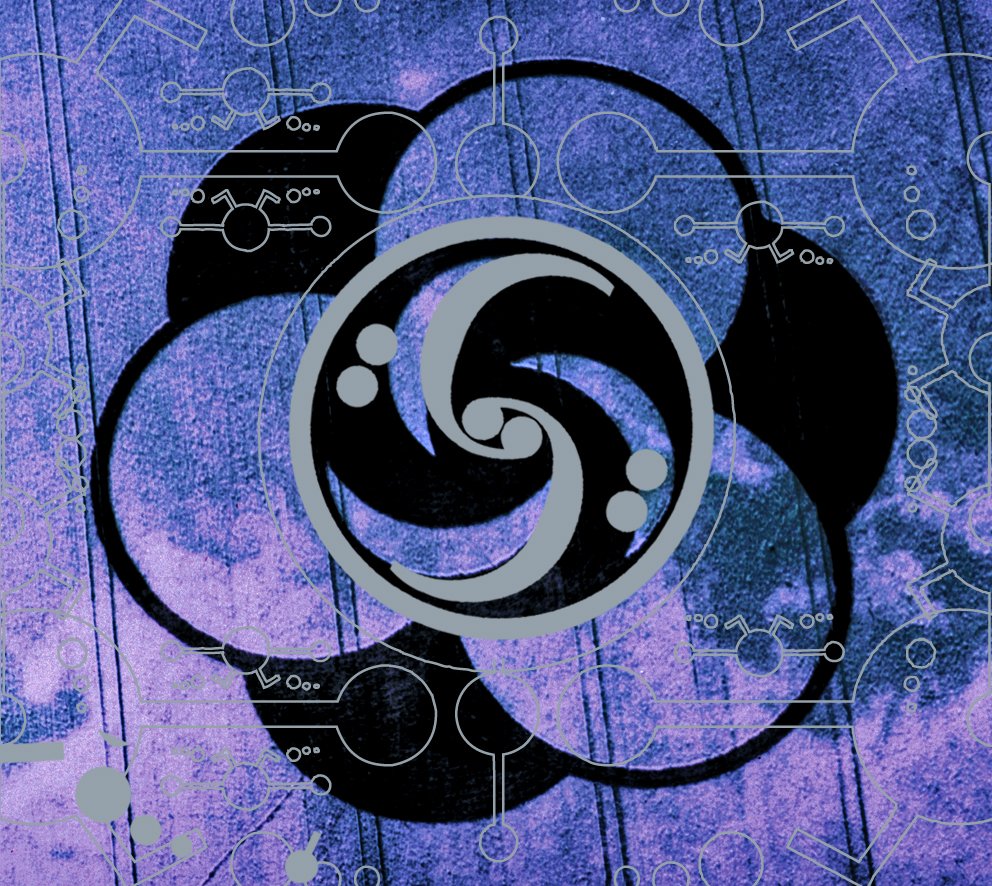

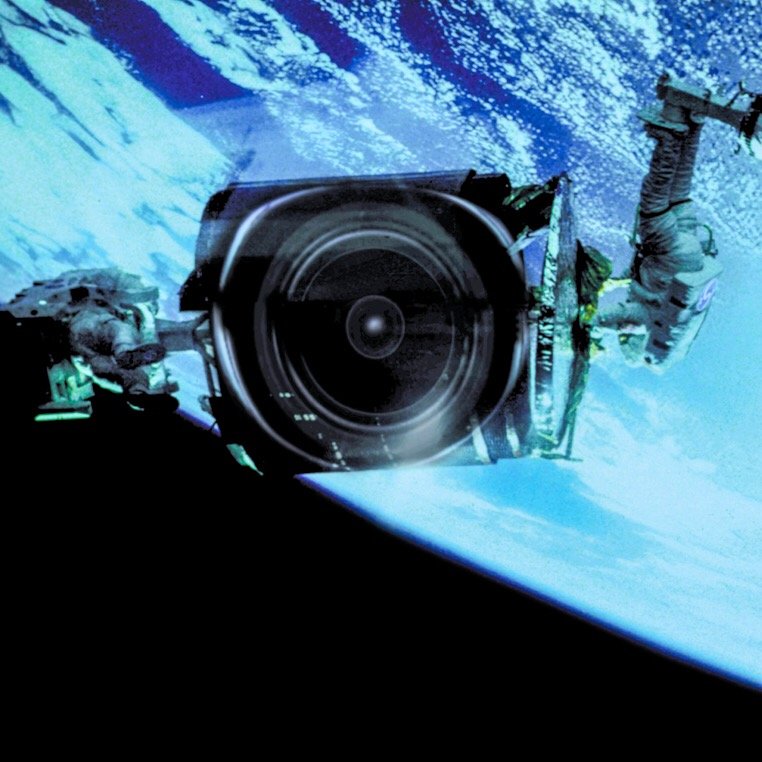
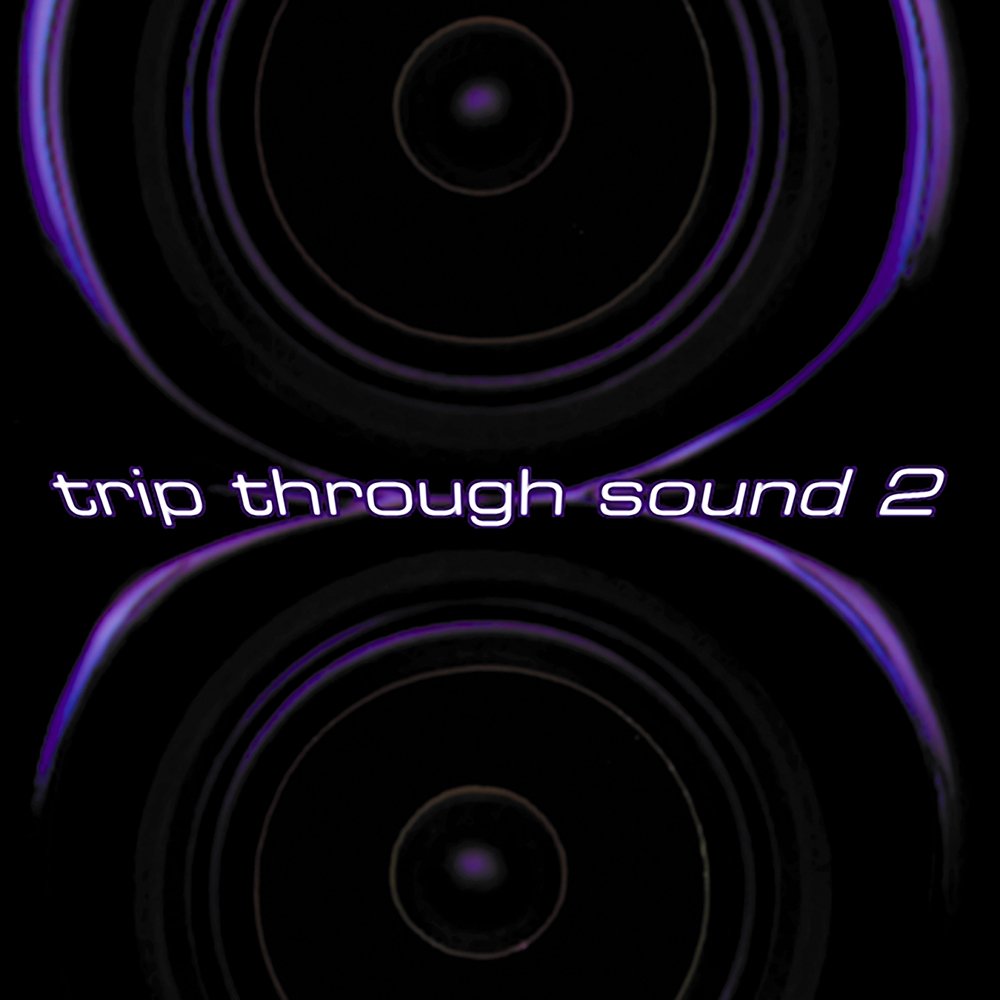
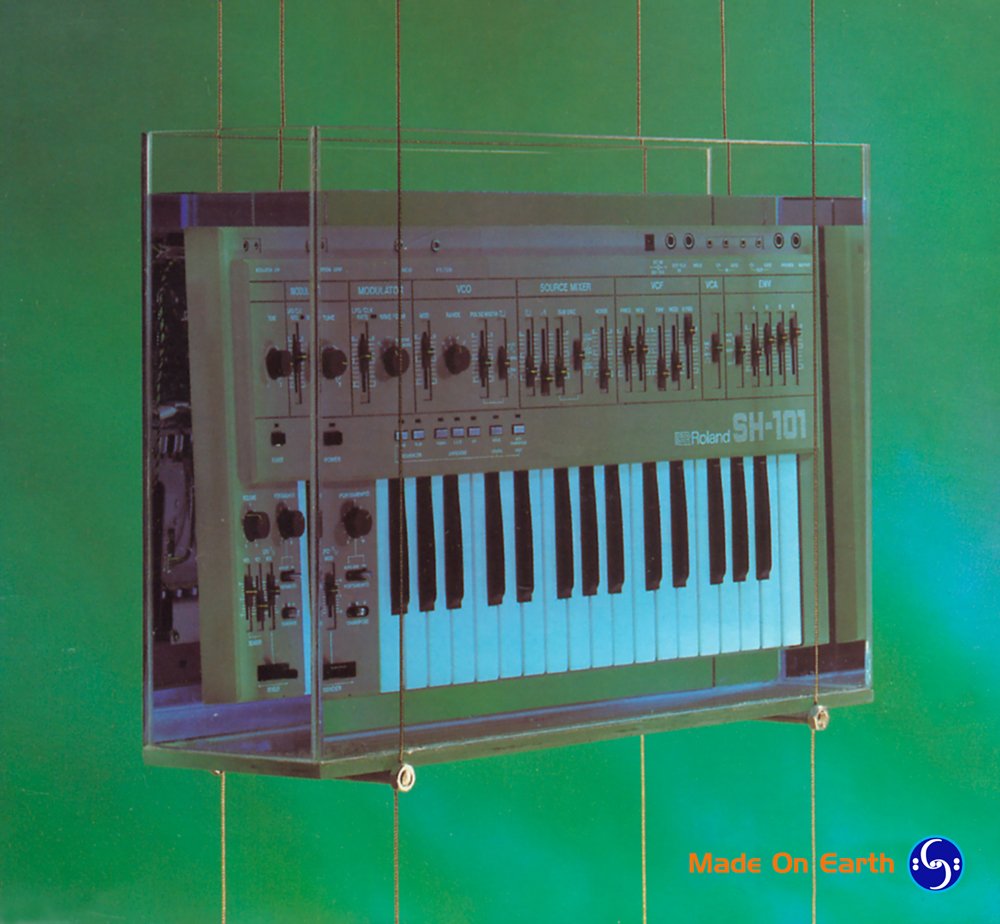

BLUE ROOM AMERICAS OPENS
The combined successes of our pod range of designs, the Blue Room brand and the stable of artists that made up the Blue Room Released record label enabled the opportunity to open an office with some fine like-minded fellows in San Francisco led by Nicholas Crayson.
Our presence helped fan the interest in early dance music on the West Coast; our theme was being played loud on Haight & Ashbury, while small record shops sprouted up, all supporting electronic music. From here, Blue Room ran promotional events, launch parties and concerts, including appearances at the first Burning Man Festival, all supporting the Blue Room Released release roster, allowing artists to perform, some for their first time in the US.
Nick Crayson is a fellow visionary, innovator and all-around fearless prankster. We've had the pleasure of knowing each other and being good friends for a long time, so advocating for Nick to run Blue Room in America was easy. Nick seized the position with aplomb, pouring his heart and soul into Blue Room Americas. He built a team of great individuals to help him run the label and establish a conduit of music and events fresh from Europe to pour across the USA through the West Coast. To be based in America, let alone San Francisco, was a dream.
As a youngster, my first drawings copied interpretations from the unique psychedelic album covers of the Sixties and Seventies. These inspirations included psychedelic LPs, posters and the many styles and characters in the Grateful Dead, Santana and Jimi Hendrix. As I grew older and more aware, my knowledge and reverence for the spirit of the artistic movement of California grew. It was historically one of the significant melting pots inspiring positive change and harmony through music culture.
It also resonated with Robert Trunz, as he had grown up during the Sixties and was part of an alternative movement in Switzerland. We were bringing some new sounds to the States, and what's more, our music was being played loud and proud on the legendary Haight-Ashbury.
The fantastic new personalities of the San Fran team added their vibe and color to the Blue Room family. An eclectic bunch of music lovers such as Darin Earl, and Jonathan Obera, musicians, and producers/DJs such as Adam OHana and Anne with visualizer Cyril Noir made the Blue Room their day job, setting up the distribution and promotion network. For fun, we ran ads displaying Blue Room's first collaborations in space, installing Earth's first Orbital Sound system, which was my first foray into playing with NASA imagery and Photoshop. I made regular visits to the SF team. I guided their development, establishing design continuity with Cyril Noir to work within parameters that allowed him to give Blue Room Americas its visual spin. Some of Cyril's work can be seen here in this section. In fact, the whole team managed to take a piece of the Blue Room themselves, emotionally owning it and giving their all. Friendships solidified across the Atlantic. Everyone on the label wanted to visit the US, to play and be a part of the 'happening'. These were peak years for us as our artists traveled the world. At one point, we organized events sequentially from Europe, Tel Aviv, Tokyo, Kyoto, Sapporo, New York and then back to San Francisco. Blue Room began to resonate across the globe louder and louder.
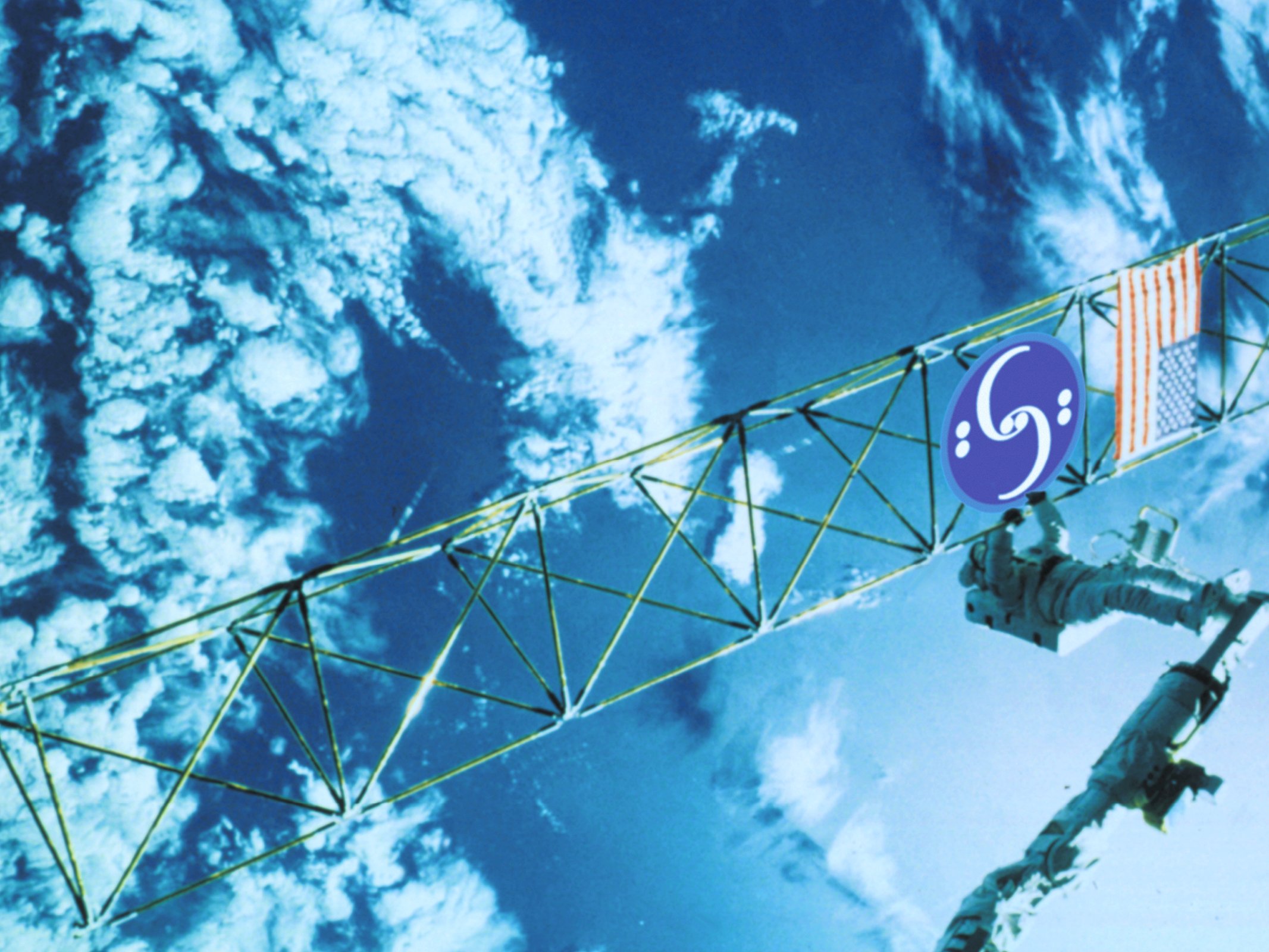











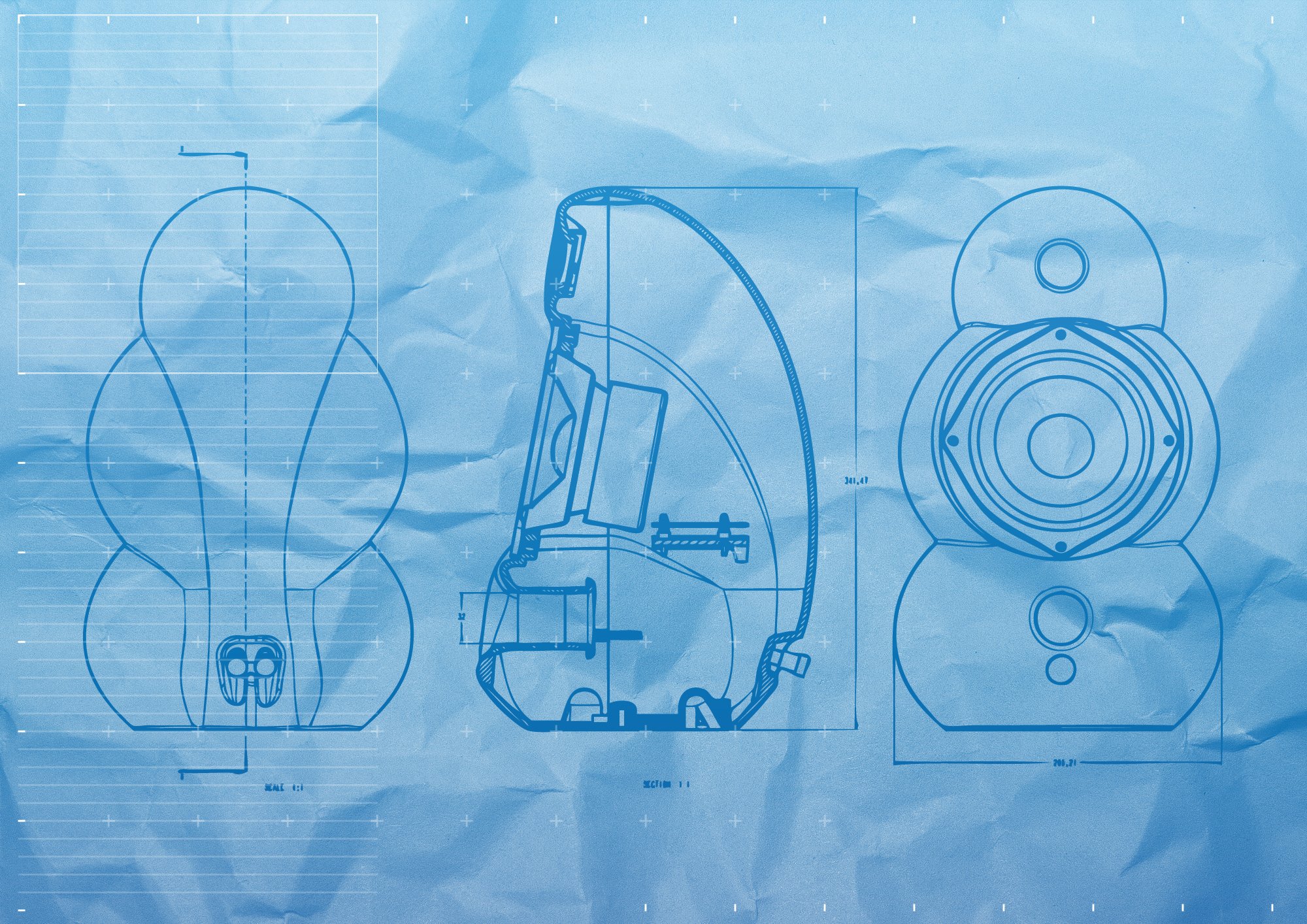
REBIRTH OF THE MINIPOD
As Blue Room Loudspeakers separated from B&W in 1996 to become independent, the search for new production partners led to creating of the MiniPod from high-stiffness, recyclable ABS plastic in Denmark.
We included many improvements to the general functionality of the new MiniPod model. These included a much-needed makeover to the delicate nature of B&W drivers. Our tweeters were easy to dent, partly due to the dust cap material. We redesigned Child-proof tweeters and driver domes to a new specification to counter any accidental damage from the exposed drivers.
Martin de Saulles worked on the revised acoustic design with Laurance Dickie and managed the integration of Production Development with Scandyna in Billund, Denmark. I traveled to Billund to oversee this and build relationships with the Scandyna team for future efforts. Martin reworked the Sputnik spikes fixing mechanism with his brother and, with Robert Trunz, created the bracket mechanism for the omnimount wall bracket.
My contribution was that the frame holding the Pod should continue the shape of the MiniPod, like the TechnoPod, and I suggested the form by rounding off the MiniPod cabinet at the bottom.
The new manufacturing conditions allowed us to experiment with a spectrum of colors and finishes, including transparent plastics. We celebrated this with the unique transparent Lucente edition.
To keep up with demand and as the production volume increased, robot arms replaced human ones to meticulously paint the MiniPod cabinets in a dedicated spraying facility in Denmark.
The electronic arm was programmed to retrace the hand movements of a master painter with thirty years of spraying experience. It could work around the clock with no breaks, which was both terrifying in a dystopian 'Terminator' type way and simultaneously technologically fascinating.









BLUE ROOM LOUDSPEAKERS RELAUNCHED
In 1998, my position as Creative Director and Industrial Designer gave me a pivotal role in overseeing and contributing to the MiniPod brand experience. Robert assembled a team involving an advertising agency in Switzerland run by Marc Fischer and his imaginative designers. His team included, amongst others, Dan Egli joined by Marketing consultant Christoph Spengler. Robert met them in Switzerland through Christoph, who was inspired by their approach. They had worked with major European companies, such as Siemens and corporate identities, and as a team, had a deep relationship and passion for Professional Snowboarding, which injected fresh new ideas into the brand material. Together over a series of meetings and workshops in London and Zurich we created a strategy to re-launch the MiniPod. Our focus was on the detail of the customer experience. We looked at the customer journey, from ordering the product to receiving and opening the packaging. We wanted to leverage these crucial touchpoints into a memorable experience for the Pod User.
The Swiss team delivered a guideline presentation, which introduced the new 3D look of the Blue Room logo. They also established a minimal yet sophisticated design tone for the new MiniPod range.
We all collaborated again for the MiniPod website, our informative, interactive brand interface. We pooled our ideas together to make it as unique as possible, including animated grooving Pods and all. We used the popular platform Flash to animate the navigation. I took visual inspiration for the website on the concept of crop circle shapes, images I started experimenting with on the Blue Room Released album "Signs of Life"”
It was a hugely popular site embracing animation capabilities, and from the website, the MiniPod could be ordered and delivered globally within 48 hours, which was quite innovative for 1998. Our in-house team, Graham Holden and Owen Priestley, helped with the updated version.
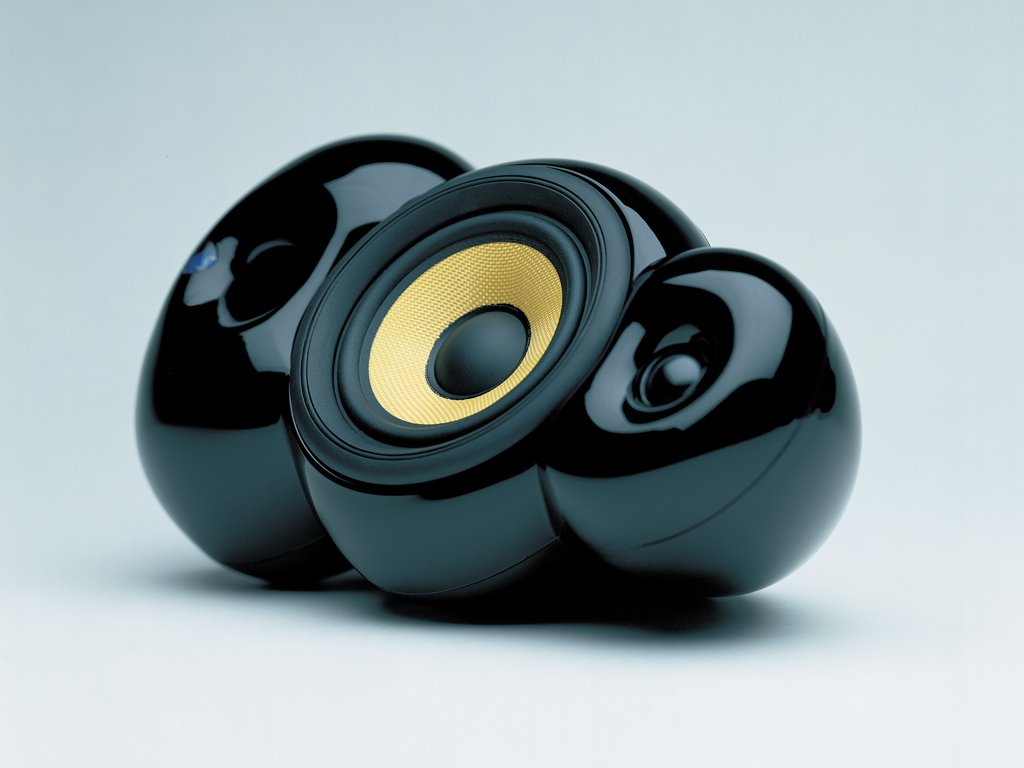

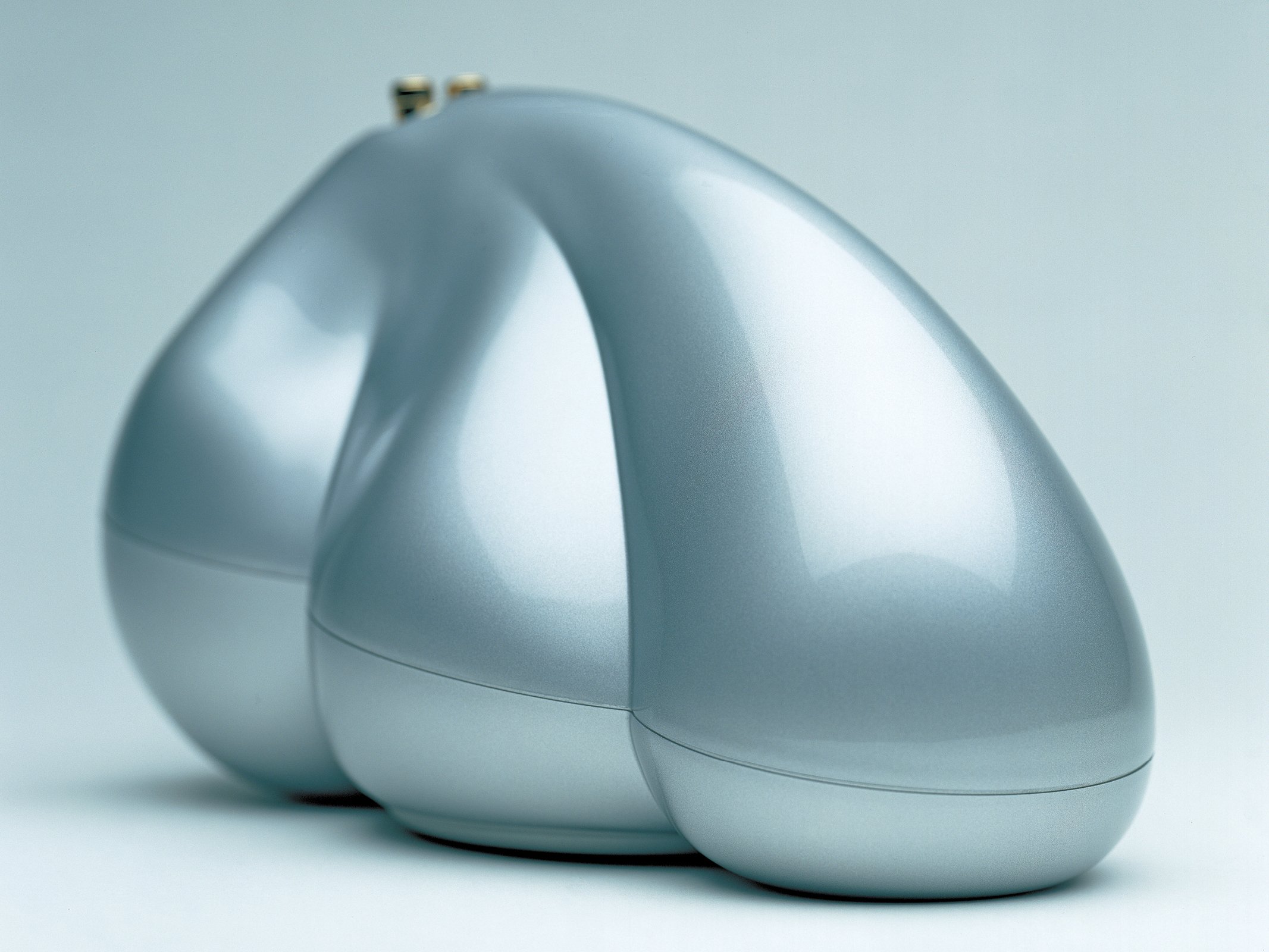

POD SACK
Receiving a product is one of the most important moments in its life cycle. It's an opportunity for the owner to cement the bond formed by attraction. The product has to continue to seduce and exceed your initial expectations. If it was love at first sight, the time you feel and touch the product, if done correctly, will stay with you all its life.
We looked at unique ways of packaging the product. Packaging is an important part of the customer experience; we wanted it to be reusable to extend this. It wasn't just about delivering a clever sustainability solution; most importantly, we wanted it to be something you'd like to use.
The Swiss creative team found a source for inflatable bags from a company that supplied the medical industry. It was a great idea as they were economically viable and reusable. It was also a memorable introduction for the customer to receive the Pod. It would be like receiving something organic that fits the Pod's nature.
To extend the reusable concept, we collaborated on designing a tough nylon bag to fit and protect the inflatable packaging. The Swiss team were all snowboarders and were part of that design culture, so they took the lead on the bag manufacture. We set parameters for the bags used after delivery.
We wanted it to be reusable and practical, laying a foundation requirement set a path of design of the bag that included various ways of adjusting it for use as a rucksack. The bag was not only a practical accessory, offering the opportunity to carry the MiniPod and Sputnik spikes in style, but also a handy solution for sending the MiniPods back for service or repair. To help facilitate this, we created various concealed straps for transforming the bag from handling two Pods to one Pod and included transparent wallets for address and shipping details. The bag was then branded clearly with the MiniPod website.
To receive the MiniPod in this way opened great opportunities for gifting the product through the website. The MiniPods were offered for delivery to most global locations within 48 hours, order to door. Again, a bold statement for 1998 e-commerce.
We sold about four like this in the first year; people didn’t trust the internet with their money yet.

BIRTH OF THE BASS STATION
With the prospect of competing in a cinema setup, it was apparent that the MiniPod needed some extra bass extension, so a new design brief was set. Modern music listening and the emergence of home theater have created a need to amplify that bottom octave without wanting to return to prominent and dominant speakers. Traditional sub-woofers have always been large chunky boxes, and because most of them have built-in amplification, they usually sport unsightly heat extrusion fins.
I was inspired by the ancient form of a percussionist's drum for the shape of the MiniPod Bass station. The bass driver sits horizontally on top and vibrates like a drum skin, conducting sound through the cylindrical body of the subwoofer cabinet to the tuned bass-port horn sat underneath.
The Bass Station cabinet is created from a two-piece plastic injection molding, internally braced for acoustic rigidity. Its cylindrical form is gently contoured to minimize air turbulence, and the cylindrical enclosure keeps internal resonance at a high frequency to avoid any sound coloration.
All the low frequencies emitting from the Bass-station come through the downwards firing bass reflex port, which flares gently to keep the airflow smooth. Placing the inner end of the port at the center of the bass-station cylinder helps to keep unwanted overtones out of the frequency band. In keeping with the MiniPod the shape is stationed on four aluminum Sputnik legs, which also lift the bass port from the floor. A gentle curve sweeps around the cabinet finishing in a teardrop mount for placement of the product badge. The Bass Station is powered and includes 75 watts of amplification neatly concealed on the backside of the cabinet. When the speaker is active, a blue LED light emits behind the front translucent product badge to indicate it is powered on.
This complementary acoustic technology can come from behind the sofa and unobtrusively positioned to join the MiniPods on show.

BIRTH OF THE CINEPOD
Due to the popularity of the MiniPod and Bass Station I was commissioned to design a center channel for the MiniPod cinema range. This project allowed me to work closely again with mentor and acoustic engineer Laurence Dickie.
Dic wanted me to imagine two MiniPods joined together at the tweeter by a ninety-degree angle. This acoustic rule immediately gave an estimated cabinet height, and the volume of the two MiniPods suggested a dimension for overall size. I used these guides to sculpt the form.
My first drafts established continuity between the CinePod shape and MiniPod. Once I had created the overall shape, I drew scaled orthographic representations with 3-D sketches and physical models of the bass port detail in filler.
The overall form contained a lot within it, and I tried to be as conservative with the space as possible.
The CinePod design process was also an excellent opportunity to explore and incorporate some modifications I wanted to use to update the MiniPod design. I had wanted to conceal any wiring to the CinePod. The terminal tray cover solved this and significantly improved the overall flow of the CinePod shape; it also neatly covered the entrance hole of the wall bracket.
All my orthographic dimensional drawings, sketches and models, such as the port flare, were used to create a 3-D CAD model, which provided the basis for making the tool in three pieces front, back and bottom. Again, as with the Bass Station, the finished enclosure was internally braced and made from ABS plastic.


2001/BIRTH OF THE MICROPOD
The MicroPod SE system was initially conceived as a complete home cinema audio solution, offering the radical nature of the MiniPod on a smaller scale. It was also never destined for release, but sometimes you can't control everything.
My first ideas for the MicroPod were based around the shape of the MiniPod from the bottom of the driver and up, removing the port area and surround, making an apparent relationship to the Pod range.
Taking this a step further, I started to experiment with the spine of the Pod and thinning the volume around the tweeter housing. Originally I wanted to incorporate a way of including and concealing the bracket as part of the shape (as illustrated), allowing the seed-like form to be self-contained.
This idea was changed when it was decided accessories would be available separately for this range. I kept the overall styling and the round element at the bottom of the cabinet modified to incorporate the speaker fixing plate of the bracket assembly, which used a scaled-down version of the MiniPod Omnimount wall bracket.
When originally released, the drivers had a carbon weave cone. A revision of electrical components replaced this with the distinctive yellow Kevlar bass/midrange unit and a soft dome tweeter. Two different subwoofer styles became available for the MicroPods, including a smaller version of the MiniPod Bass Station (pictured right in the background) finished in a two-tone style exaggerating the curve curling around the cabinet.
To coincide with the completion of the MiniPod range (consisting of MiniPod, CinePod and Bass Station), we planned to release a 28-page booklet in celebration of the story of the Pod and the culture around it. It was an excellent opportunity to tell the story of the Blue Room from its beginnings, taking in its heritage, many facets and influences, showcasing the subsidiary companies such as Blue Room Released and MELT 2000.
Visually it was a chance to look at the evolution of the Pod shape and use the shoot to create a consistent portfolio of imagery for the entire range. We planned it to be part of a new marketing strategy and included a new makeover to the website and marketing collateral, moving on from the Swiss minimal style. We planned to keep it local using the studios of Michael Gardiner from Walter Gardiner, coincidentally one of the oldest existing photography companies in the World. Michael has a long history with B&W, having shot the B&W Nautilus previously.
We spent a long time writing content and planning the imagery. We took the shoot over three days and included a lot of unconventional lighting setups.
This project was to be my last work for Blue Room, and unfortunately, the book and series of images never made it to be published as the Blue Room closed its doors.






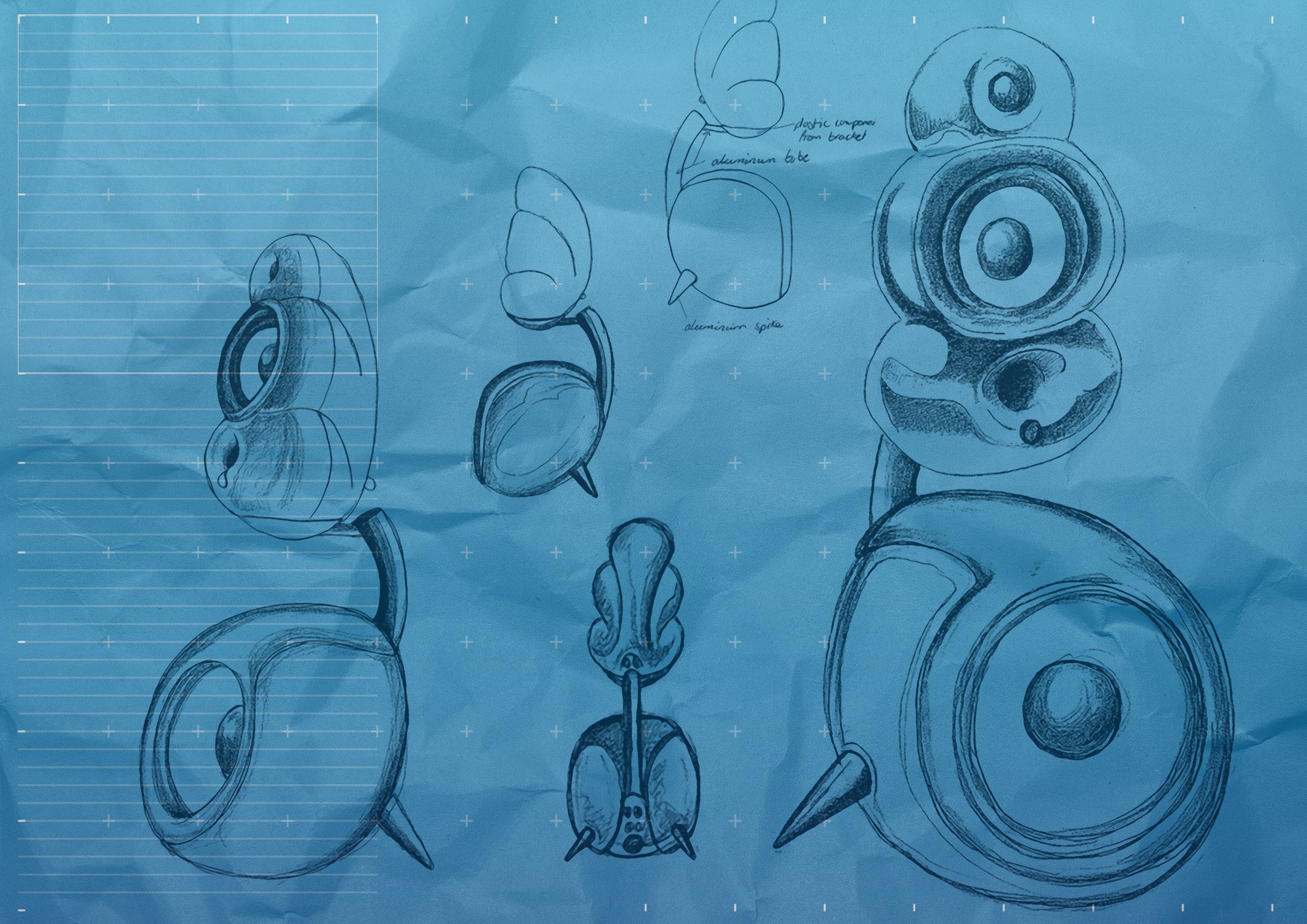
"As a form, it was also organic, undulating and evolved fit for purpose. This concept triggered many ideas and has continually inspired me throughout my career. My forms have grown to display a lineage of visual personality traits that make them distinct as a family."
SIMON GHAHARY
-
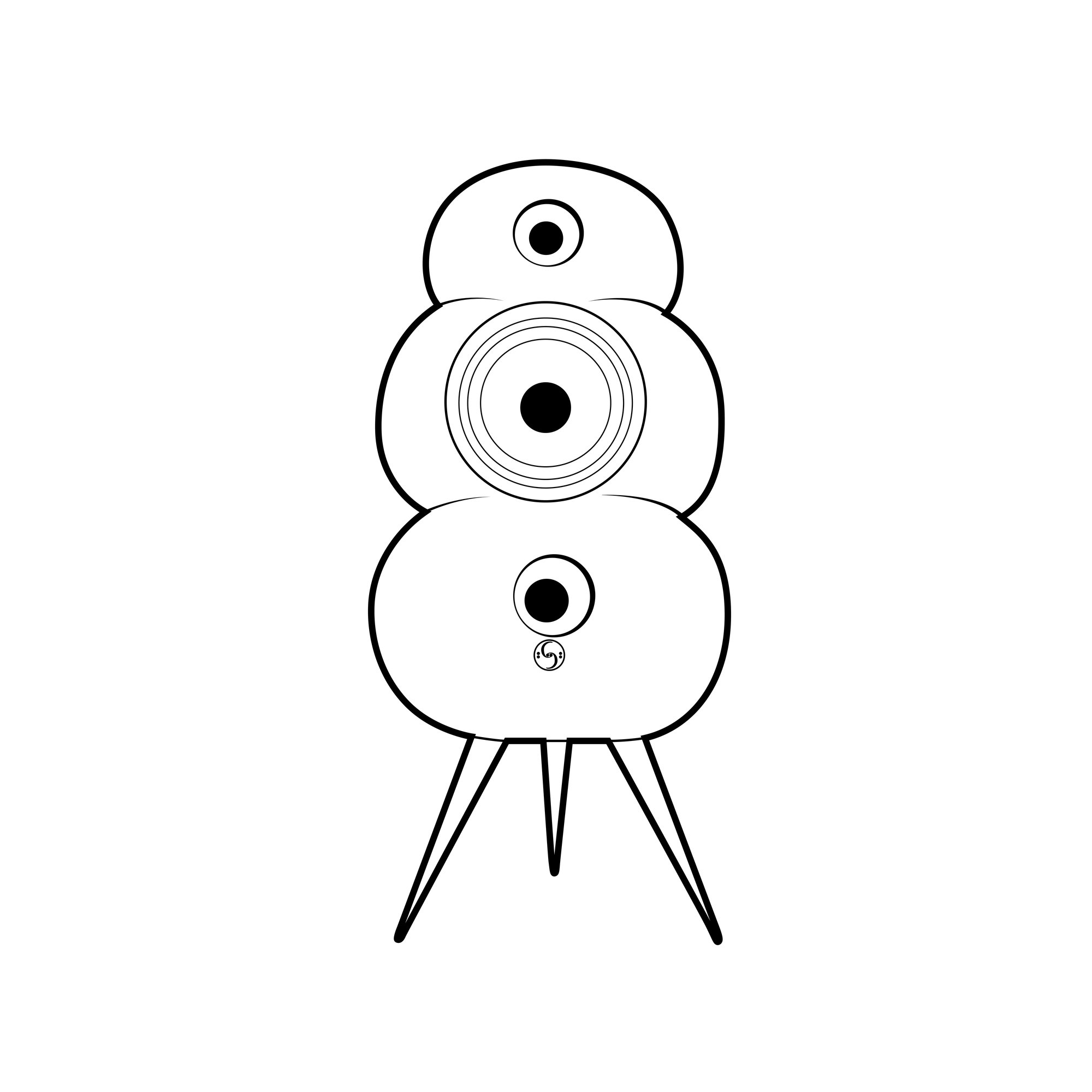
HOUSE POD
The first Pod was developed to encompass the central tenets of the Blue Room philosphy.
-

TECHNO POD
Developed to provide part of a full-frequency sound system experience. Professional Environments.
-

MINIPOD
Your music companion, Minipod, delivers performance sound in a smaller package. As the range grew, so did its capacity to provide options for each listening environment.
-

MINIPOD ABS
Developing the Minipod for mass production and changing cabinet materials from handmade GRP to ABS injection plastic made the minipod more accessible to a broader audience. It was made in Billund, Denmark, the exact location of LEGO.
-

BASS STATION
The Bass Station provides lower bass frequencies as a subwoofer for the Minipod range. Its unique shape allows it to fit within the living room as a piece of furniture, and its cylindrical styling makes it perfect for sitting in corners.
-

CINE POD
The Cine Pod center channel provided the centerpiece to a 5.1 Sound system, perfect for the cinema listening experience.
